Catamarans: A Complete Guide to Multihull Boats
Catamarans have been a part of sailing history for centuries and continue to be popular for their stability, spaciousness, and performance. Developed by various cultures around the world, the principles of catamaran design have evolved over time to become optimized for both pleasure cruising and racing. This complete guide will help you understand the essentials of catamarans, their unique characteristics, and how to choose the right one for your needs.

From the basic concepts of multihull design, performance, and handling, we will explore the advantages and benefits of a catamaran in terms of safety and comfort on board.
Along the way, we will discuss maintenance considerations, distinctive catamaran brands and models, and how a catamaran lifestyle can compare to more traditional sailing options .
Finally, we will provide learning resources and frequently asked questions tailored to both seasoned sailors and newcomers to the world of catamarans.

Key Takeaways
- Catamarans are known for their stability, spaciousness, and performance
- This guide covers aspects like design, handling, safety, and choosing the right catamaran
- Resources and frequently asked questions provide additional insights for potential catamaran owners
Understanding Catamarans
Design Characteristics
Catamarans are known for their unique design, which features two parallel hulls connected by a deck. This design provides several advantages over traditional monohull boats, such as stability and speed.
With their wide beam, catamarans have a reduced risk of capsizing and can access shallow waters due to their shallow drafts 1 .
One of the notable aspects of a catamaran is its twin hulls, which offer increased living space and comfort compared to a monohull. Additionally, catamarans are often favored by recreational and competitive sailors for their excellent maneuverability 2 .
The materials used for constructing catamarans range from wood to fiberglass, and even aluminum for high-performance vessels. Aluminum catamarans are known for their strength, lightweight structure, and resistance to corrosion 3 .
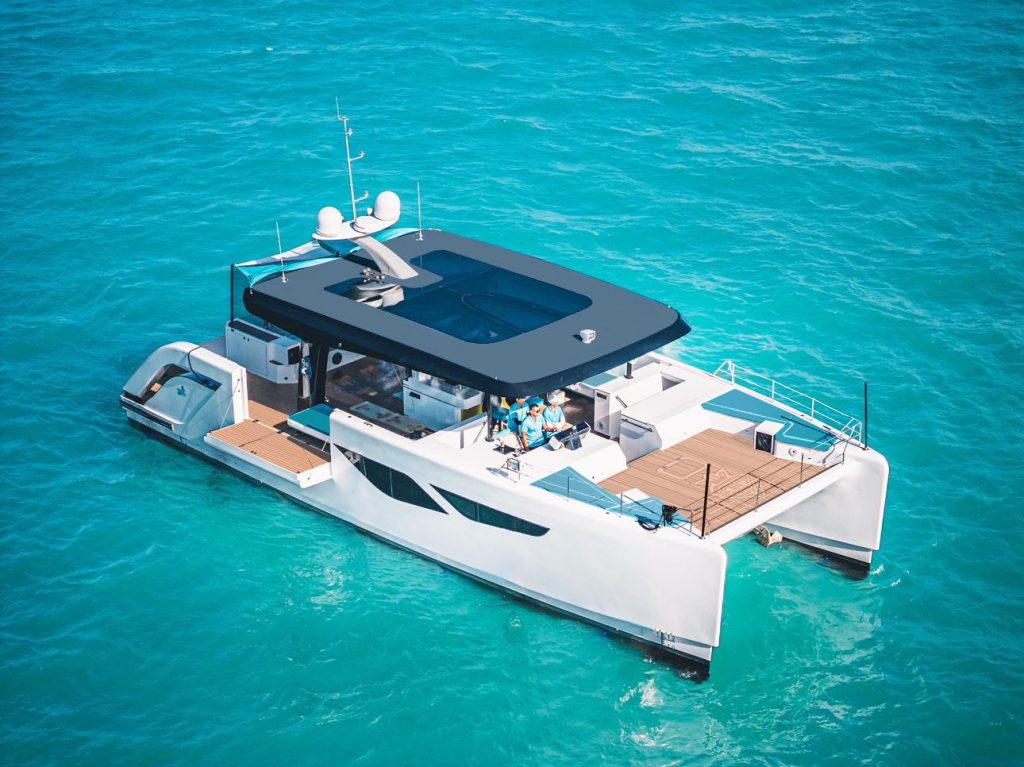
Hulls and Construction
The hulls in a catamaran are crucial to its stability and performance. These hulls help distribute the weight evenly across the water surface, minimizing drag and allowing for smoother sailing.
In general, the hulls can be categorized into two types:
- Symmetrical Hulls : The hull shape is similar on both sides, which enhances balance and stability in various sailing conditions.
- Asymmetrical Hulls : One side of the hull is designed differently than the other, which can be advantageous when sailing upwind.
The construction materials used in building catamaran hulls also play a vital role in the boat's performance and durability. Common materials include:
- Fiberglass : A popular choice due to its lightweight, strength, and ease of maintenance.
- Wood : Traditional material that offers a classic look, but requires more maintenance than fiberglass or aluminum.
- Aluminum : Lightweight and strong, aluminum is an excellent choice for high-performance catamarans 4 .
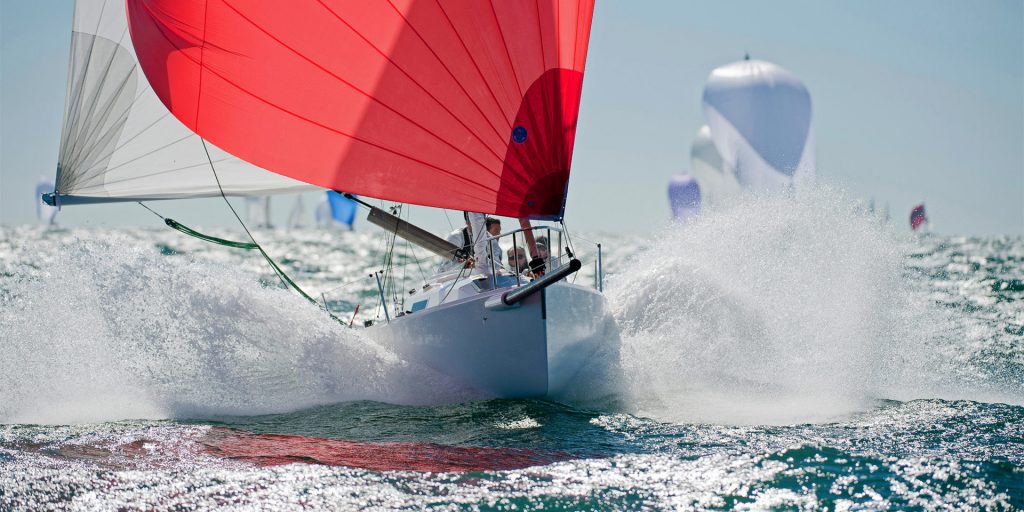
Multihulls vs Monohulls
There's often a debate between the benefits of multihull boats, such as catamarans or trimarans, and monohull boats. Here are some key differences between the two:
- Stability : Due to their wide beam and reduced heeling, catamarans offer improved stability compared to monohulls. This makes them an attractive option for those who want to avoid seasickness or feel more comfortable on the water 5 .
- Speed : Multihull boats are known for their speed, which results from their ability to minimize drag and maintain a level sail.
- Living Space : Catamarans and other multihulls generally have more living space, as both the hulls and the connecting deck can be utilized for accommodation and storage.
- Maneuverability : While monohulls are known for their agility and ability to point close to the wind, catamarans can still offer exceptional maneuverability when properly sailed 6 .
Performance and Handling
Speed and Efficiency
Power catamarans have gained popularity for offering a unique combination of speed, efficiency, and stability. Their dual-hull design allows for less water resistance, which directly translates to higher speeds and better fuel efficiency compared to traditional monohull boats.
In addition, the wide beam provided by the two hulls ensures a stable ride even at higher speeds. This makes power catamarans ideal for cruising, fishing, and watersports ( Boating Beast ).
Sailing Dynamics
When it comes to sailing catamarans , the performance is affected by factors such as keel, rudders, mast, and sails.
Their wide beam and dual-hull design provide inherent stability and reduced heeling effect, making them less likely to capsize compared to monohulls.
I should also note that catamarans have a shallow draft, which gives them the ability to access shallow waters that may be off-limits to other boats ( Navigating the Waters ).
In my experience, the lighter weight of a catamaran and its aerodynamic design can contribute to remarkable sailing performance under different wind conditions.
The larger sail area relative to hull weight allows them to harness more wind power, further enhancing their speed and agility on the water.
Maneuvering and Docking
Maneuvering and docking a power catamaran involves understanding its unique handling characteristics.
The presence of two engines in separate hulls allows for more precise control in confined spaces such as marinas.
The maneuverability of these boats is typically improved by the use of dual rudders that are located close to each powered hull for efficient steering ( BoatUS ).
When docking under power, I find it helpful to carefully assess the wind and current conditions beforehand.
This is because catamarans can be more sensitive to windage due to their larger surface area above the waterline.
By understanding how these forces may affect the boat, I can make adjustments to my approach and successfully dock the catamaran without any incidents.
Safety and Comfort on Board
Safety Features
Safety is a top priority when sailing any type of vessel, including catamarans. A well-built catamaran offers several features aimed at ensuring the safety of those onboard.
First, catamarans have inherent stability due to their wide beam and twin hull design . This makes them less prone to capsizing than monohull boats. This stability allows me to confidently navigate various water conditions .
In addition to stability, catamarans are designed with positive buoyancy, making them almost unsinkable . Of course, safety equipment such as lifejackets, flares, and first aid kits should always be onboard and well-maintained.
Furthermore, you should also stay updated on weather conditions, avoid sailing in high-risk areas, and learn your boat's safe sail limits.
Living Spaces and Comfort
When it comes to living spaces, I value comfort and practicality as essential features for my time on the water. Catamarans offer a unique advantage in this regard, as their dual hulls create spacious living areas.
Most catamarans are designed with separate cabins in each hull, allowing for privacy and comfort when sleeping. Additionally, these boats typically feature shallow drafts , which means I can access shallow waters and anchor close to shore.
The main living area, or salon, is situated on the bridge deck between the hulls. It usually includes a seating area, a dining table, and a galley (kitchen). Large windows provide ample natural light and panoramic views, making the space feel open and bright. Some catamarans even have the option for an additional living area on the upper deck where you can enjoy the sun and breeze.
One aspect of catamaran living I truly appreciate is the ample storage available. Each cabin typically has built-in storage spaces for clothes, gear, and personal items. There are also designated areas for equipment such as spare sails, tools, and water toys. This makes it easy for me to keep my belongings organized and make the most of my time on the water.
Maintaining a Catamaran
Routine Maintenance
In order to keep my catamaran in the best possible shape, I make sure to perform routine maintenance tasks. These tasks are essential to extend the life of the components and ensure smooth sailing:
- Cleaning : Regularly cleaning the deck, hulls, and sails prevents buildup of dirt, algae, and other debris that could affect performance.
- Inspection : Periodically inspecting my catamaran allows me to detect any potential issues before they become significant problems. I pay close attention to the rigging, sails, and lines on my boat.
- Lubrication : Keeping all moving parts lubricated is vital to prevent friction and wear on components such as winches and pulleys.
- Antifouling : Applying antifouling paint to the hulls of my catamaran helps prevent the growth of marine organisms that can damage the boat and reduce its speed. Make sure to do this at least once a year.
Dealing with Wear and Tear
Despite my best efforts to keep my catamaran well-maintained, wear and tear is inevitable. Here's how I deal with common issues that could arise from regular use:
- Repairs : When I notice signs of wear on sails, lines, or rigging components, I make it a priority to repair or replace them promptly. Neglecting these issues can lead to more significant problems and affect the boat's performance.
- Hull maintenance : If I find dents, scratches, or stiff rudders on my catamaran's hulls, I address them immediately. Repairing any damage not only ensures smooth sailing but also prevents further issues from developing.
- Sail care : Over time, my sails can become stretched, torn, or damaged due to exposure to sun, wind, and saltwater. Regularly inspecting them for signs of wear and making any necessary repairs or replacements helps maintain optimal performance.
- Rust and corrosion prevention : Since my catamaran is made of various metal components, I need to protect them from rust and corrosion. I routinely check for signs of corrosion and apply anti-corrosive treatments when needed.
Catamaran Brands and Models
High-Performance Models
In recent years, there has been a growing interest in high-performance catamarans. I have seen a variety of brands and models that have impressed me with their performance capabilities. One notable brand is Fountaine Pajot , which has a long history of producing a range of sailing catamarans and power catamarans. Some of their popular models include the Tanna 47 and the Bali 4.4 .
Another high-performance catamaran I've come across is the Leopard 40 . Known for their speed and exceptional handling in various conditions, the Leopard brand started with sailing catamarans and has since expanded to include power catamarans. Their models range from 40 to 53 feet long, offering both power and luxury for those looking for a thrilling experience on the water.
Cruising Catamarans
When it comes to cruising catamarans, the Lagoon brand is synonymous with luxury and comfort. With a range of sailing catamarans from 40 to 70 feet long, Lagoon offers spacious catamarans for extended bluewater cruising. Their 60- and 70-foot power catamarans are equally impressive, providing ample living space and smooth sailing experiences.
I've also found the Aquila 42 PC to be a remarkable cruising catamaran. With a focus on design and innovation, Aquila has produced catamarans perfect for exploring the open sea with friends and family. Their spacious, stable designs allow for a more enjoyable and serene journey, ensuring you arrive at your destination comfortably.
The Catamaran Lifestyle
Anchoring and Cruising
I find catamarans to be a fantastic choice for cruising and anchoring , which is a critical part of living the catamaran lifestyle . Catamarans have several advantages when it comes to anchoring and cruising, such as:
- Stability : Due to their wide beam and twin hulls, catamarans remain stable during anchoring, which reduces the risk of seasickness.
- Shallow draft : Thanks to their shallow draft , catamarans can anchor close to shore, enabling better access to protected coves and more beautiful beaches.
- Speed : Despite their large size for cruising vessels , catamarans are generally faster than monohulls. This is a result of their slim hulls and reduced water resistance.
When it comes to anchoring, catamarans can make use of their shallow draft to anchor in locations that other boats cannot. This allows for a greater range of cruising spots, which makes the overall experience much more enjoyable and unique.
Living on a Catamaran Full-time
For many catamaran enthusiasts, the dream of living full-time on a catamaran is entirely possible. While not without challenges, there are several factors that make living aboard a catamaran an enjoyable experience:
- Spacious living areas : Catamarans generally have more living area compared to monohulls, providing ample space for the whole crew.
- Privacy : The separate hulls allow for private cabins, ensuring that everyone on board has their space.
- Stability : As mentioned earlier, catamarans are stable vessels, making living on them more comfortable than monohulls.
Choosing Your Catamaran
Comparing Models and Features
When I start to look for the perfect catamaran, the first thing I focus on is comparing various models and features .
I determine the key factors that are essential for my needs, such as size, passenger comfort, and performance. By doing so, I can identify which catamaran models are most suitable for me.
For example, if I plan to sail with a large group, I would look for a catamaran that offers ample space both inside and out.
To help me with my comparisons, I usually create a table or list of the different models and their features:
| Model | Size | Comfort | Performance |
|---|---|---|---|
| A | 40ft | Spacious | High |
| B | 35ft | Average | Average |
| C | 45ft | Luxury | High |
This visual aid makes it easier for me to sort the options and prioritize my considerations, such as price, yacht type, and brand.
New vs. Second-Hand
Another critical aspect of choosing a catamaran is deciding between a new or second-hand boat.
Both options have their pros and cons, and ultimately it depends on my preferences and budget.
If I can afford a new catamaran, I get the advantage of the latest design , features, and technology. Plus, I typically receive better warranty coverage and support from the manufacturer.
However, new catamarans are more expensive and can have long wait times due to high demand.
On the other hand, purchasing a second-hand catamaran can save me a significant amount of money, and I might find a high-quality boat with low mileage or well-maintained by the previous owner.
However, this option carries more risks, as I need to be knowledgeable about potential maintenance issues and conduct a thorough inspection before purchase.
Learning Resources
Books and Manuals
When it comes to learning about catamarans, there are plenty of books and manuals available.
One of the highly recommended books is Multihull Voyaging by Thomas Firth Jones. This book provides a comprehensive understanding of multihulls, including catamarans, and is an essential guide for any beginner sailor.
Another great book to check out is Catamarans: The Complete Guide for Cruising Sailors by Gregor Tarjan.
With a foreword by Charles K. Chiodi, publisher of Multihulls Magazine, this book covers all aspects of cruising catamarans. It includes detailed information on design, construction, and maintenance, as well as tips and tricks for sailing a catamaran.
Here are a few more books that I find valuable:
- The Catamaran Book by Tim Bartlett, an excellent resource for both beginners and experienced sailors
- Catamaran Sailing: From Start to Finish by Phil Berman and Lenny Rudow, a comprehensive guide to both catamaran racing and cruising
Online Content and Photography
In addition to books, you can find plenty of online content and photography about catamarans.
Websites like Sailaway Blog and Boating Guide offer tips, techniques, and how-to articles for sailing catamarans.
Many of these sites also include stunning photography, showcasing these beautiful vessels in action.
For those who prefer Kindle or e-books, many of these resources are available in digital format.
This makes it easier for you to access them anytime, anywhere, allowing you to keep learning and improving your catamaran sailing skills.
To further enhance your knowledge, you can also join online forums and communities dedicated to catamarans.
These platforms provide invaluable advice and first-hand experiences shared by fellow sailors, as well as recommendations for additional learning resources.
Frequently Asked Questions
What factors should be considered when choosing a catamaran for full-time living?
When choosing a catamaran for full-time living, consider its space and layout , as it will become your home.
Look for a design with a comfortable living area , ample storage, and sufficient berths for the number of people living aboard.
Also, consider fuel efficiency , ease of maintenance, and the catamaran's cruising range .
Lastly, the overall cost of ownership , including insurance and mooring fees, should be considered.
How do catamarans perform in rough sea conditions?
In general, catamarans are known for their stability, which is primarily due to their wide beams. This makes them less prone to capsizing when compared to monohulls.
However, their performance in rough sea conditions will depend on the specific model and design of the catamaran. Some may perform better in certain conditions than others, so researching and selecting the right design is essential.
What are the key differences between sailing a catamaran and a monohull?
One of the main differences between catamarans and monohulls is stability.
Catamarans have a wider beam , which makes them more stable and minimizes the risk of capsizing.
They also have shallower drafts, which allow them to access more shallow waters compared to monohulls.
Additionally, catamarans often have larger living spaces, making them more comfortable and suitable for cruising and full-time living.
What are the advantages of catamarans for long-distance cruising?
Catamarans offer several advantages for long-distance cruising.
Their wide, stable design provides a comfortable ride and reduces the risk of seasickness.
They can also attain higher speeds due to their reduced drag and generally sail faster than monohulls on certain points of sail.
The shallow draft allows them to explore more coastal areas and anchor closer to shore. Lastly, their spacious interiors make them ideal for extended cruises and living aboard.
How does one assess the value of a used catamaran on the market?
Assessing the value of a used catamaran requires thorough research and inspection.
Start by comparing the age, model, and condition of the catamaran to similar listings on the market.
Take note of any upgrades or additions made to the boat, as these can affect the price.
It's essential to inspect the boat in person or hire a professional surveyor to ensure there are no hidden issues that could affect its value.
What essential features should be looked for in a catamaran intended for ocean voyages?
For ocean voyages, look for a catamaran with a strong, well-built hull designed to handle rough conditions.
Safety features such as liferafts, adequate flotation, and sturdy deck hardware are crucial.
A reliable engine and well-maintained rigging and sails are also essential.
In terms of living space, opt for a catamaran with a comfortable, spacious interior and ample storage.
Last but not least, good navigation and communication systems are necessary for long-distance ocean voyages.
Related Articles

Inflatable House Boat: Ultimate Guide for a Floating Adventure
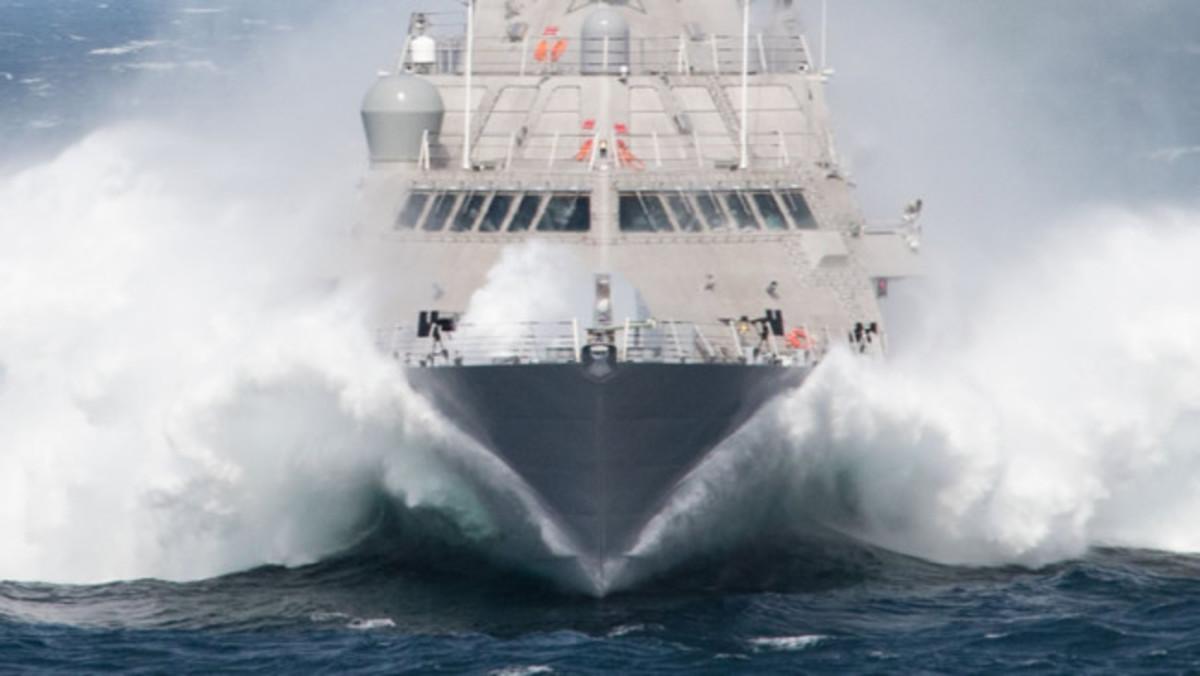
Bow of a Ship: Essential Parts and Functions Explained

Top 10 Used Boats For Sale: Best Picks for Every Budget
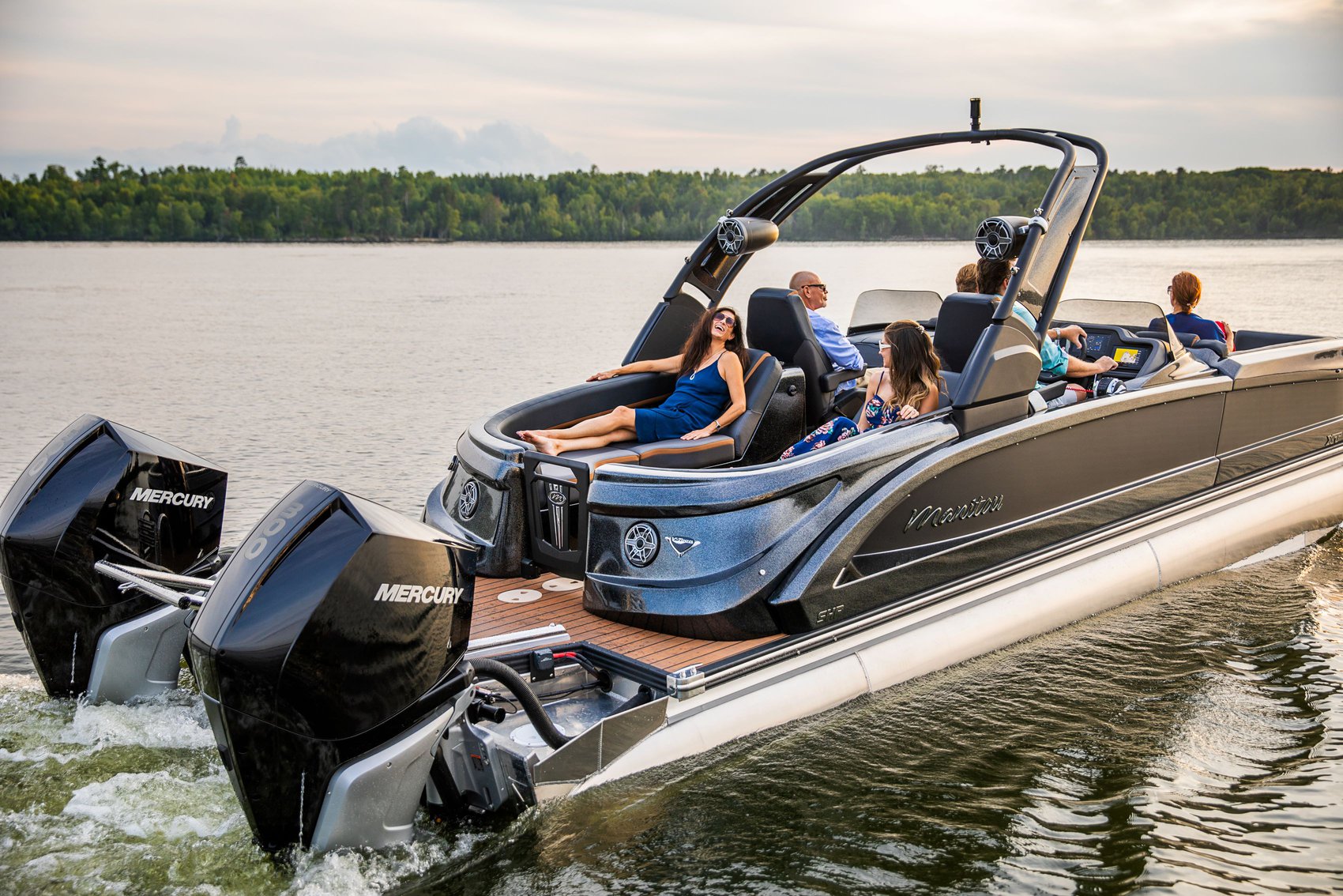
Pontoon Boats: A Comprehensive Guide for Enthusiasts
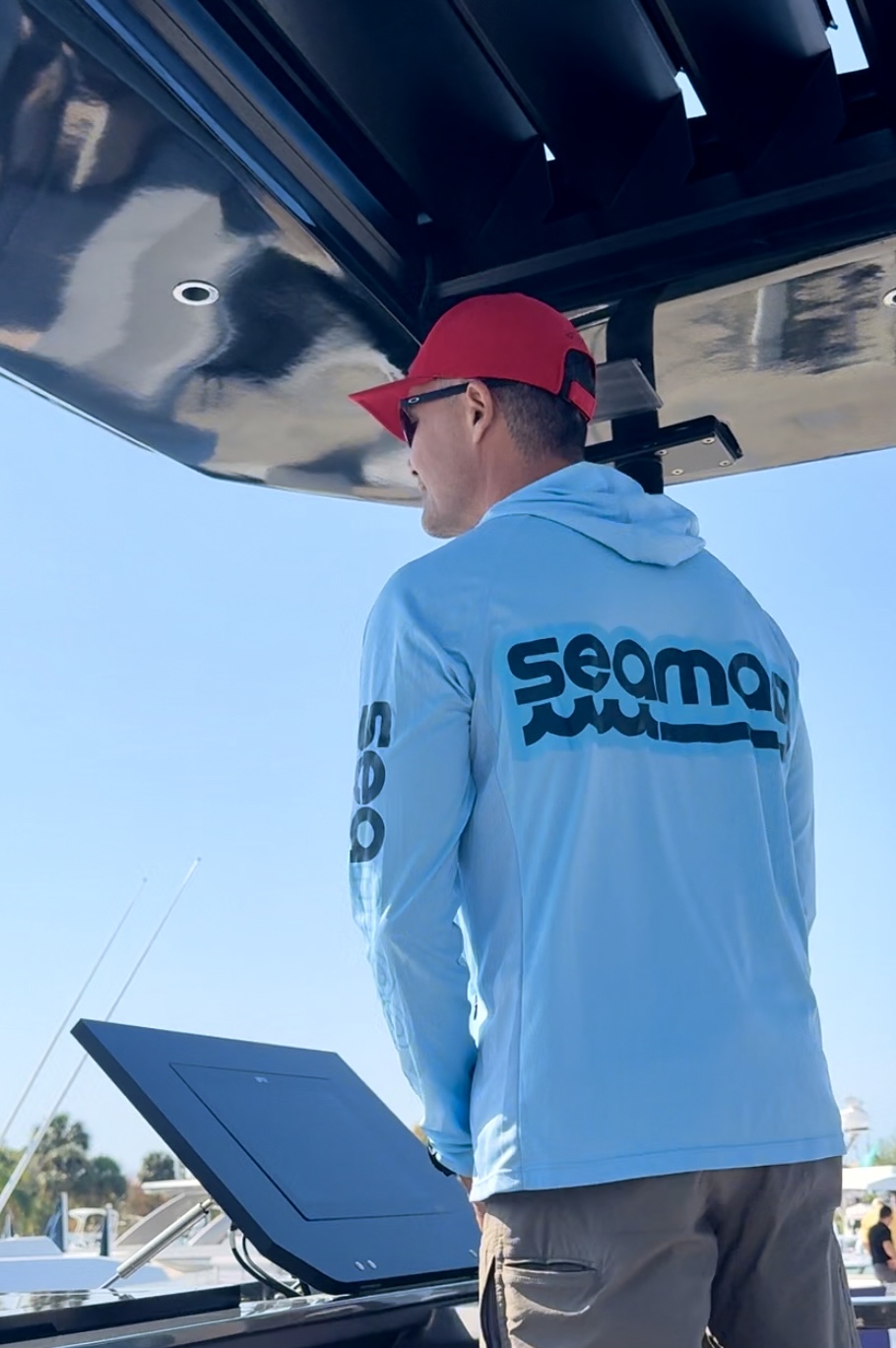
Is The Boat Market Crash Here? 2024 Outlook Unveils Key Insights
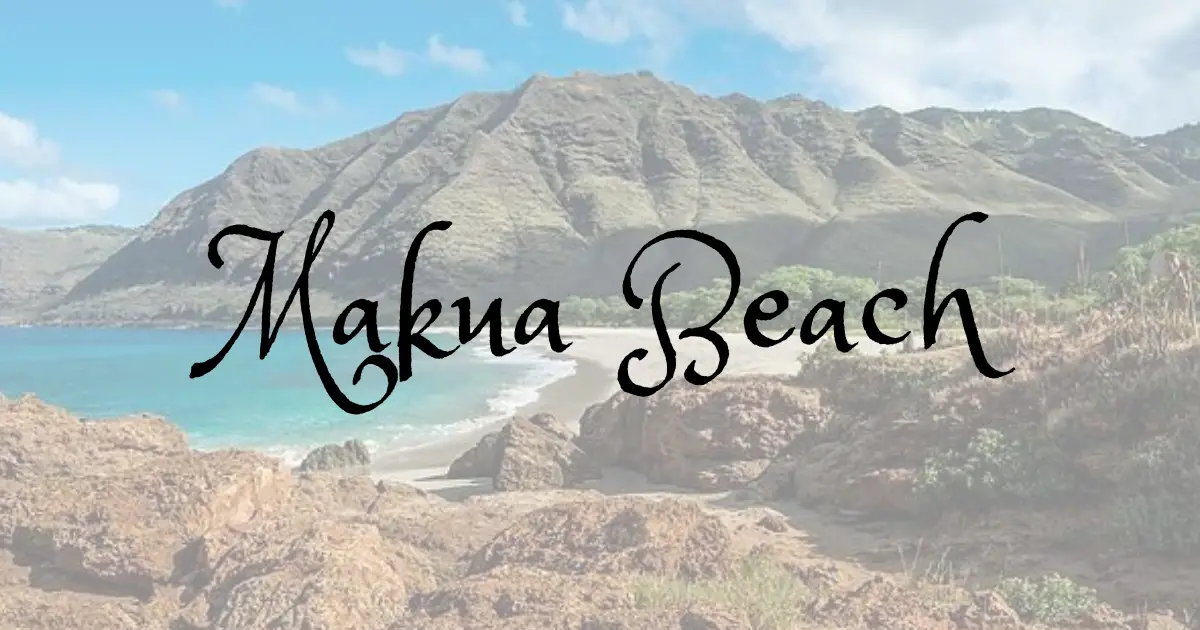
Makua Beach: A Hidden Gem on Oahu’s West Shore
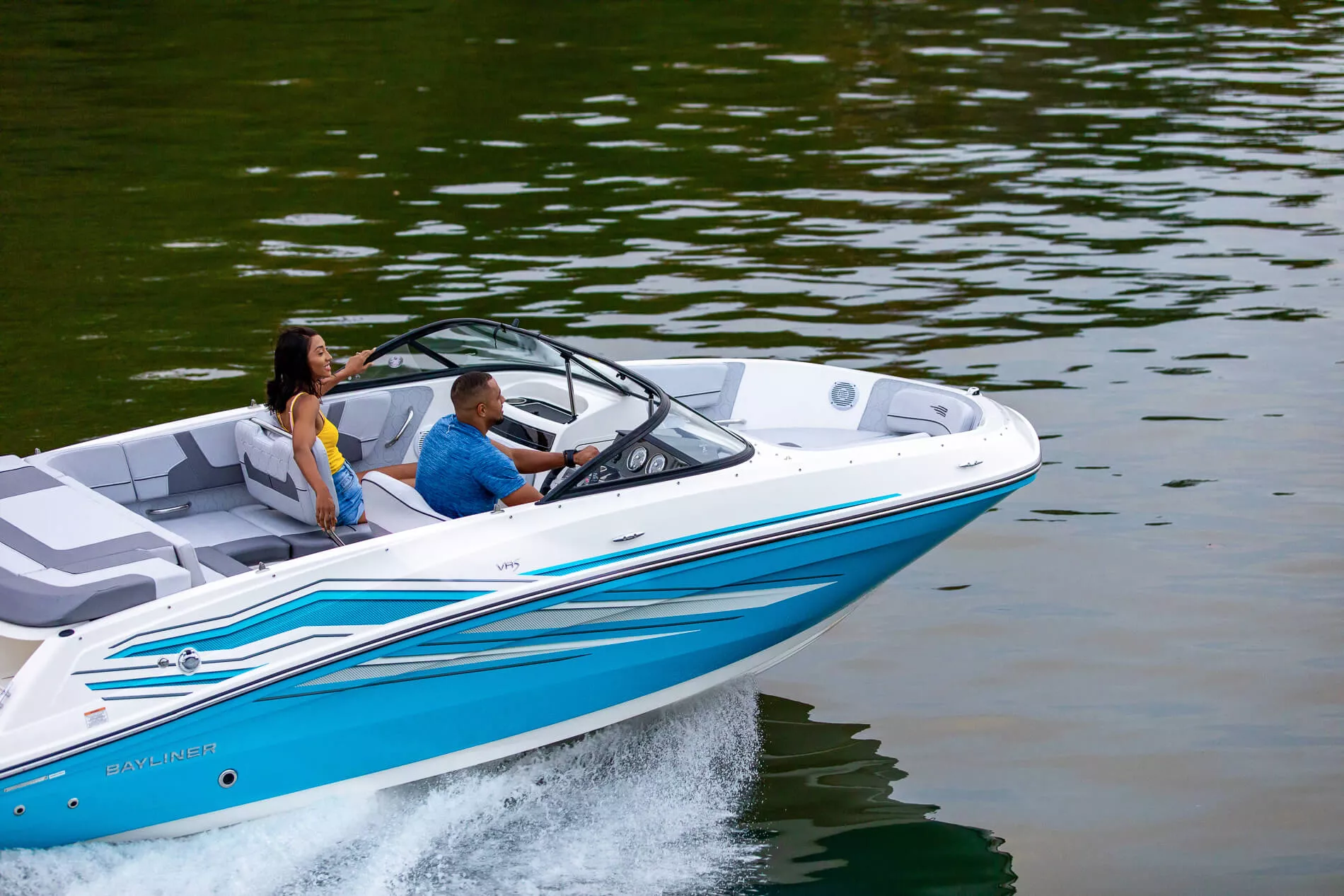
Bayliner Boats: Ultimate Guide to Models, Performance, and Features

Top 10 Alumacraft Boats for Sale Illinois

Catamaran Hulls- Everything You Need To Know
- Post Written By: Boater Jer
- Published: July 17, 2022
- Updated: July 19, 2022

Disclaimer: You might notice that we recommend products in some articles. We may earn a commission for referring you if you click the link and buy a product.
We only recommend products we’ve tried/tested/own (that’s why you won’t find thousands of affiliate links on my site). If you have experience with one of the products we’ve mentioned, please share your experiences in the comments at the end.
Catamaran hulls are not like normal boats but provide increased stability. Let’s take a look at these incredible boats and how their hulls create one of the most versatile watercraft available today.
The Tamil Cholas used catamarans to ferry their troops to invade Malaysia, Indonesia, and Burma. The early paravars or fishing communities in the southern part of Tamil Nadu used two-hulled boats to fish. Polynesian seafarers were also early users of the catamaran, utilizing the watercraft to get to hard-to-reach islands. ( source )
Although the catamaran hull concept is a relatively new introduction to modern boat design , the boat has been in use since the 5th century. It was used for fishing, traveling, and transporting people and supplies.
Parts Of A Catamaran
Here are the basic parts of the modern sailing catamaran:
- Hulls are what sets this boat apart from the rest. The catamaran has two hulls, while the monohull, as the name suggests, has only one hull. Most of the advantages of this boat are hinged on these two hulls.
- The bridge deck connects the two catamaran hulls.
- On top of the catamaran hulls and the bridge deck is the deck . It is where owners attach most of the equipment in a boat.
- You can locate the berth, the galley, and other living amenities in the cabin .
- The cockpit is where you find the navigation equipment of the boat . It is where you control the catamaran’s rudder, sails, and engine.
Types Of Catamaran
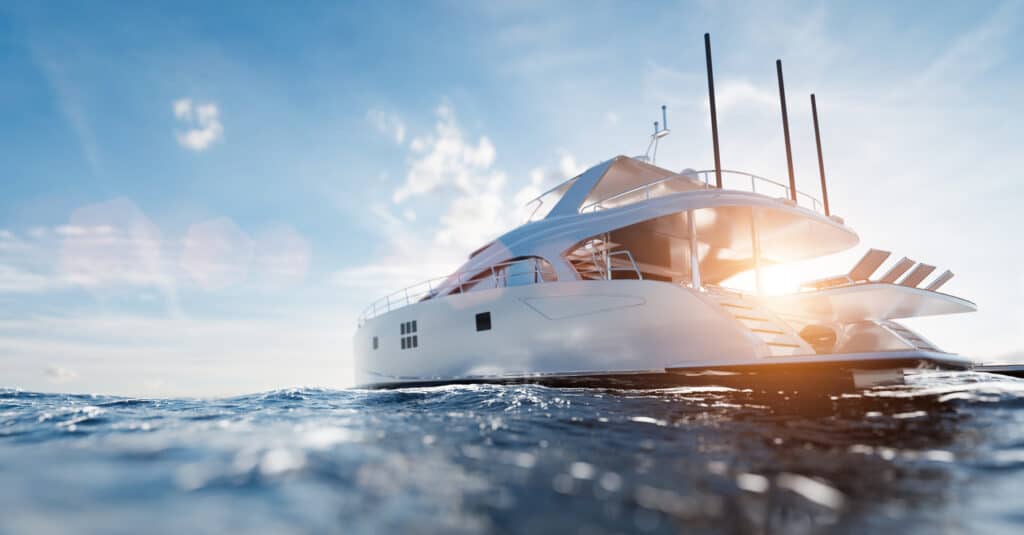
The modern catamaran is far more different than its crude ancestor. Instead of tree cutouts, catamarans are now carbon fiber or fiberglass. Here are the different types of catamarans:
Based On function
Pontoons are usually present on rivers and lakes and sometimes even on oceans, but they only travel near the shore.
In a catamaran pontoon-type boat, the pontoons serve as storage areas, where you will find the onboard motors. They are useful for water leisure activities such as short water trips, tubing, wakeboarding, and water skiing.
Some pontoons may also serve as houseboats. They provide a broader, more stable platform ideal for a floating house. Plus, the space is bigger, and most of it is above water. It offers a better viewing option than a monohull. ( Source )
Small Waterplane Area Twin Hull is a catamaran-type boat that the United States Navy initially used for military purposes. They provide the water stability that is necessary when transporting heavy military equipment.
One example of a military SWATH catamaran is the Spearhead class EPF. It is as long as a World War II escort destroyer, yet it is twice as fast at 43 knots. It can reach that speed because of its two separate hulls.
Because of their innate speed, SWATH catamarans can become patrol boats in lakes and rivers. They can easily outrun and outmaneuver standard watercraft.
Nowadays, there are SWATH cruise ships and other non-military variations. ( Source )
Based On Design
- Sailing Catamaran
The smaller sailing catamarans do not have auxiliary engines, so the owner can propel the boat by harnessing the wind using the sails. It’s a popular choice for people with very little or no sailing experience because they are light and easy to use.
The larger sailing catamarans are for group charters and long-distance cruising. They have become so popular lately that they now outnumber monohulls in tropical locations all over the world. They have a last, a headsail, and a mainsail. And the twin hulls have one engine each.
- Power Catamaran
Unlike their sailing cousins, the powered catamarans do not have sails. They have massive engines which provide high speed. Their twin hulls are stronger and can carry and protect the large motors.
The smaller “powercats” are used mainly for fishing. The bigger ones are rented out for charters and cruises.
Catamaran Hulls Performance
Thanks to the catamaran hulls, the boat offers many advantages over other boat types.
- Because its dual-hull design provides a broader base, it offers more water stability than monohull boats. It makes the cat (catamaran) a popular choice for fishing expeditions and cruises.
- Riding a catamaran is ideal for people who feel seasick whenever they ride boats. The twin hulls prevent the boat from moving from side to side. The hulls allow the boat to travel smoothly, even on moderately choppy waters.
- The catamaran is the best choice when storing provisions and other household items with less heeling and bobbing.
- The twin hulls’ stability is ideal for many activities such as cooking and partying.
- Cats offer more moving space because of their broader base, thanks to dual hulls.
- With a catamaran, you have two great options on where to hang out. You can do it on the spacious deck or below the galley.
- Compared to a monohull of the same size, the catamaran can accommodate more equipment and people.
- The living area in a catamaran is above the water line. This feature provides more natural light, a greater view of the outside, and better air circulation.
- Since catamarans do not have keels, they can anchor on shallow waters, something that most monohulls will not be able to do. This ability of catamaran boats is impressive, especially if you are going around areas with many reefs and small islands.
- Catamaran hulls allow the boat to cut through the waves easier and faster. It means they require less engine power than their monohull counterparts.
- Because it has two engines and two rudders, the catamaran can easily maneuver in very tight spaces.
- Because they do not carry heavy keels, catamarans can sail faster than monohulls.
- The catamaran’s stability, speed, and weight make it a safer option than the monohull. It can sail in shallow waters, make a 360 degrees maneuver effortlessly, and carry more provisions.
Disadvantages Of A Catamaran
Like any other boat type, the catamaran also has drawbacks and limitations. Here are some of them:
- The catamaran hulls prevent the boat from sailing as fast as the monohull upwind. The two hulls cause drag, and this slows the boat considerably.
- Because of its bigger size, looking for a docking site can be more difficult and costlier than a monohull.
- For hardcore sailing fans, the experience of sailing with a catamaran will never be able to match that of sailing with a monohull. To them, the challenge of true sailing is just not there with a catamaran.
What Are The Hulls Of The Catamaran Called?
According to the Online Etymology Dictionary, the Tamil word கட்டுமரம், which is pronounced as kattumaran, is where the word catamaran takes its name. The word means “pieces of logs tied together”. Through the years, the term has evolved into what is now a catamaran in English.
What Are The Characteristics Of A Catamaran Hull?
- Both hulls of a catamaran complement each other to achieve very minimum water resistance.
- Because of this, it takes less energy to propel a catamaran, whether via an engine or sails.
- The catamaran hulls provide stability to the boat. The twin-hull significantly reduces bobbing.
- The catamaran’s ability to keep steady on the water makes it an ideal vessel for cooking, dining, and storing provisions.
Are Catamarans Good In Rough Water?
Catamarans are amazingly stable in rough water. The catamaran’s design and build, which provides stability, are factors why it is one of the best boats to use when the waters are choppy.
Yes, catamarans are relatively more expensive than monohulls. Nevertheless, since single-hull boats are less expensive, their resale value is also cheap.
If you add all the advantages that a catamaran offers – safety, comfort, and speed- it does not come out expensive.
patekphilippe.io
Share this post with your friends, subscribe to our newsletter.
Join us in our love for all things water. And Adventure.

How To Clean A Kayak
Kayaks fabrication uses several different materials that react differently to the water. These materials also respond differently to the conditions of the kayak storage. Kayaks are, in most cases, only used seasonally, which means they spend a significant time stored out of sight and out of mind. The biggest challenge to cleaning a kayak is

How Much Does A Catamaran Cost? (Big Crazy $$$?)
You’ll want to know the Catamaran cost if you find sailing on lakes and fishing exciting. Then, a catamaran boat is your best bet. A catamaran is a watercraft featuring two parallel hulls. The name ‘catamaran’ is from the Tamil word, kattumaram, which means logs bound together looking like the first fishing boat designs. How

How Long Does It Take A Canoe To Go… (Canoe Calculator Here)
You asked, and we answered: Here’s a calculator to determine how long your canoe trip will take. The calculator uses the average speed of an average canoe in calm water. Here it is: The Canoe Trip Time Calculator: Canoe Trip Calculator Enter the distance: Kilometers Miles Calculate Canoe Articles & Information replica rolex
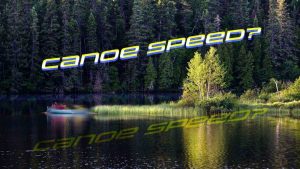
How Fast Can Canoes Go? We Find Out (With World Records).
Sliding over the glass-like stillness of a peaceful morning lake, a ride in the canoe is an incredible experience. The mist rising slowly off the water and wildlife waking to the coming day can be a nearly magical experience for the canoeist. However, it may not be only about peace and tranquility. If you like

A Boaters Guide to Suzuki Outboard Engines
Till 1994, Suzuki manufactured two-stroke outboard engines. But to grow in the boat market, it began manufacturing four-stroke outboard motors, whose popularity was a big hit. Still, many people wonder if Suzuki makes good outboard motor? People may doubt the quality of Suzuki’s outboard engines. However, with proper maintenance, the motors can last for thousands

Can Sailboats Go Against The Wind? Here’s How!
Can sailboats go against the wind? Let’s find out! There is a saying that you can’t change the direction of the wind and would have to adjust your sail; how true of it. One cannot alter the wind’s current by will or any other method; that is why one should adjust their sail accordingly. Generally,

Boat Information By Type
© 2023 Boating.Guide, A Hyperwave Media Group Ltd. Publication.
Privacy Overview
Did You Know That We Offer Contract to Closing Services? Click Here to Find Out More.
Need Marine Financing? Apply Here With Our Partner, First Approval Source
- Catamaran Interviews
- Catamaran Reviews
- Buying Advice
- Selling Advice
- Woods Design Advice
- Admiral 38
- Admiral 40
- Admiral 50
- Americat 3014
- Antares 44
- Aquila 44
- Aquila 48 Power Catamaran
- Aventura 37
- Balance 442
- Balance 482
- Balance 526
- Bali 4.0
- Bali 4.1
- Bali 4.2
- Bali 4.3
- Bali 4.4
- Bali 4.5
- Bali 4.6
- Bali 4.8
- Bali 40 Catspace
- Bali 5.4
- Bali Catsmart
- Beneteau Blue II
- Broadblue 346
- Broadblue 38 Prestige
- Broadblue 385
- Broadblue 435
- Broadblue 46
- Rapier 400
- Rapier 550
- Catalac 10M
- Catalac 11M
- Catalac 12M
- Catalac 8M
- Catalac 900
- Catalac 9M
- Catana 381
- Catana 39
- Catana 401
- Catana 40S
- Catana 411
- Catana 42
- Catana 42 S
- Catana 431
- Catana 44
- Catana 471
- Catana 50
- Catana 521
- Catana 531
- Catana 55
- Catana 581
- Catana 65
- Catathai 44
- Chris White
- Chris White 48 Voyager
- Chris White 55
- Condor 40
- Contour 34
- Corsair F28 R
- De Villiers
- Dean 365
- Dean 400
- Dean 440
- Dean 500
- Dix DH550
- Dolphin 380
- Dolphin 460
- Edel 35
- Endeavour 30
- Endeavour 35 Victory
- Endeavour 36
- Endeavour 44
- Endeavour 44 TrawlerCat
- Endeavour 50 Pilothouse Trawler
- Excess 11
- Excess 15
- F-41
- Fastback 43
- Fastcat 445
- Fisher 28
- Fisher 32
- Fortuna 36 Island Spirit
- Fortuna 401 Island Spirit
- Fountaine Pajot
- FP 32 Maldives
- FP 35 Tobago
- FP 36 Mahe
- FP 37 Antigua
- FP 38 Athena
- FP 39 Fidji
- FP 40 Isla
- FP 40 Lavezzi
- FP 40 Lucia
- FP 40 MY
- FP 40 Summerland MY
- FP 41 Lipari
- FP 42 Astrea
- FP 42 Venezia
- FP 43 Belize
- FP 44 Helia
- FP 44 Orana
- FP 45 Elba
- FP 46 Bahia
- FP 46 Casamance
- FP 48 Salina
- FP 50 Saba
- FP 56 Marquises
- FP 57 Sanya
- FP 58 Ipanema
- FP 60 Eleuthera
- FP Saona 47
- Fusion 40
- Gemini 105
- Gemini 3000
- Gemini 3200
- Gemini 3400
- Gemini Freestyle 37
- Gemini Freestyle 399 Power
- Gemini Legacy 35
- Grainger 420 Mystery Cove
- Gunboat 55
- Hirondelle 7M
- HopYacht 30
- Island Packet
- Island Packet Cat 35
- Kennex 420
- Knysna 440
- Knysna 480
- Knysna 500
- Knysna 550
- Lagoon 35
- Lagoon 37 TPI
- Lagoon 380
- Lagoon 39
- Lagoon 40
- Lagoon 400
- Lagoon 410
- Lagoon 42
- Lagoon 42 TPI
- Lagoon 420
- Lagoon 421
- Lagoon 43 PC
- Lagoon 44 Power Cat
- Lagoon 440
- Lagoon 450
- Lagoon 46
- Lagoon 470
- Lagoon 50
- Lagoon 500
- Lagoon 52F
- Lagoon 55
- Lagoon 560
- Lagoon 570
- Lagoon 620
- Lagoon Seventy 8
- Lagoon Sixty 7
- Leeuwin 42
- Leopard 38
- Leopard 39
- Leopard 39 PowerCat
- Leopard 40
- Leopard 42
- Leopard 43
- Leopard 44
- Leopard 45
- Leopard 45 Classic
- Leopard 46
- Leopard 46 Lion PowerCat
- Leopard 47
- Leopard 47 PowerCat
- Leopard 48
- Leopard 50
- Leopard 51 PowerCat
- Leopard 53 PowerCat
- Leopard 58
- Lidgard 73 Executive
- Looping 50
- Maine Cat 30
- Maine Cat 38
- Maine Cat 41
- Manta 40
- Manta 42
- Matrix 450 Vision
- Matrix 760 Silhouette
- Maverick 400
- Maverick 420
- Maverick 440
- Moxie 61
- Nautitech 40
- Nautitech 40 Open
- Nautitech 44 Open
- Nautitech 442
- Nautitech 46 Open
- Nautitech 47
- Nautitech 47 Power
- Nautitech 475
- Nautitech 65
- Neel 45
- Neel 47
- Outremer 40
- Outremer 45
- Outremer 50 Standard
- Outremer 55
- Outremer 5X
- PDQ 32
- PDQ 36
- PDQ 42 Antares
- Privilege 37
- Privilege 39
- Privilege 42
- Privilege 43
- Privilege 435
- Privilege 45
- Privilege 465
- Privilege 48 Transcat
- Privilege 482
- Privilege 495
- Privilege 510
- Privilege 65
- Privilege Serie 5
- Prout 31 Quest
- Prout 33 Quest
- Prout 34 Event
- Prout 35 Snowgoose
- Prout 37 Snowgoose
- Prout 37 Snowgoose Elite
- Prout 38
- Prout 38 Manta
- Prout 39 Escale
- Prout 45
- Prout 46
- Royal Cape 45
- Royal Cape 500 Majestic
- Royal Cape 530 Majestic
- Sailcraft 30 Iroquois
- Sailcraft 32 Comanche
- Sailcraft 35 Cherokee
- Sailcraft 41 Apache
- Sailcraft 44 Apache
- Scape 39
- Wildcat 350
- Seacart 30
- Seawind 1000
- Seawind 1160
- Seawind 1200
- Seawind 1260
- Seawind 1600
- Simpson 48
- Solaris 36 Sunrise
- Solaris 36 Sunstar
- Solaris 42
- St Francis 44
- St Francis 48
- St Francis 50
- Stealth 11.8
- Sunreef 60
- Sunreef 62
- Sunreef 70
- Sunreef 74C
- Sunreef 82 DD
- Sunreef 88 DD
- Switch 51
- Switch 55
- TRT 1200
- Heavenly Twins 26
- Ocean Twins 38
- Vaan R5
- Vision 444
- Voyage 380 Maxim
- Voyage 400 Norseman
- Voyage 430 Norseman
- Voyage 440
- Voyage 450 Cabriolet
- Voyage 47 Mayotte
- Voyage 480
- Voyage 500
- Voyage 580
- Voyage 590
- Kronos 45
- Wharram 38 Tiki
- AMI 320 Renaissance
- Woods 22 Wizard
- Woods 35 Banshee
- Woods 35 Flica
- Woods 36 Scylla
- Woods 36 Vardo
- Woods 38 Transit
- Woods 40 Meander
- Xquisite X5
- Xquisite X5+
Catamaran Construction – Hulls, Laminates, and Composites
- Post author By BJ Porter
- Post date October 15, 2020
- 4 Comments on Catamaran Construction – Hulls, Laminates, and Composites

It’s a given that catamarans are more sensitive to weight and loading than monohulls. Catamaran builders strive to build the lightest boats they can without sacrificing strength and stiffness, and have adapted new building techniques and materials to meet this target. Cutting weight allows more passengers and gear without sacrificing performance.
And the marketing materials reflect it–they load every review and website with polysyllabic technical jargon describing the design and production choices each builder made to deliver the best boat they can.

But when you’re reading a brochure and you come across phrases like “ hand laid bidirectional GRP ” or “ vacuumed bagged e-glass with vinylester resin over a Divinycell core ” do you know what that really means?
All modern production catamarans are made with “FRP” construction (for Fiber Reinforced Polymer). Composites aren’t new–it’s just using materials together to strengthen the whole assembly. Straw was added to bricks centuries ago, and steel reinforced concrete is a staple of construction over the last century. For boats, it’s the use of stranded fibers and cured resins which make FRP different.
The term “FRP” doesn’t get into the technical detail of which fibers and which plastics, and how they’re put together to build your hull. There’s a wide variety of fiber types which can be stranded, woven, chopped or sprayed in a varied of patterns then combined with several types of resins to make hulls with different characteristics.
Some FRP techniques produce lighter, stronger shapes, while others are quicker to build and less expensive to produce. The choice of technique is a function of many factors, from the number of hulls and parts to be built, the type of parts, the budget for the project, and many design specific requirements for weight and strength.
1. FRP Basics
The principle behind all FRP construction is the same – you lay our fibers in the shape you need, then saturate them with resin, removing all the air and voids you can. Resin is left to cure, then the piece is ready to finish and use.

The reality is more complex, since building a boat isn’t like making a flat board or a simple door. You’ve got a complex shape with a designed set of curves to build. “Tooling” is the set of shapes to make the boat parts; molds to cover with fiberglass to get the right shapes.
That’s what makes FRP so effective – you can make almost anything out of it. But to do so requires a lot of choices about what you need for the project at hand.
There isn’t a “best” all around material or technique choice for all jobs, and sometimes a lower cost technique or easier to work with material may be the better solution to the problem.
A. Fiber types
Fiber choices in the last few decades have expanded past the glass fibers used in the first mass produced boats in the 1960s. FRP construction wasn’t new even then, they built the first composite boats using modern fiberglass in the 1940s.
The major fibers used in marine construction fall into three categories – glass, aramids, and carbon. The primary differences are in the strength to weight ratios of the fibers, durability, elasticity, and cost. Some construction may use blends of fiber types to combine performance characteristics.
Glass – the most common material still, because of its low cost and versatility. The most common variety used in GRP (Glass Reinforced Polymer) is “E-glass” which refers to its strand size and mineral content. Other grades have different and sometimes better mechanical properties, but may be more expensive and less appropriate for boat building use. Fiber sizes run 10 to 25 microns for E-glass, though other grades may be smaller.

Brands like Leopard, Lagoon, and most higher production volume builders use E-glass.
Aramids – this includes brand names like Kevlar, Technora and Twaron. They have higher tensile strength than E-glass, and resistant abrasion and punctures. Kevlar is a common choice for bullet proof body armor, and can built a tough, lightweight hull. The materials can be difficult to work with, as it is very tough to cut the cloth. It is often blended with carbon fiber or other materials – Catana is known for using Twaron blends in hull construction.

Carbon – the ultimate in lightweight, strong construction material. Carbon fiber is the most expensive fiber, and is available in a variety of weights, grades and strengths. Fibers are smaller than glass – down to 5 Micron.
The lightest, most expensive hulls are made from carbon, but a catamaran builder may use carbon in places other than the hull to add strength and stiffness. Carbon boards, rudders, and reinforcing structures can enhance performance without driving the price of the boat beyond reach. Carbon is the fiber of choice for many custom builds, racing cats, and Gunboat.
B. Mats, Strands, Roving, Direction, and Weights
Fibers are woven into matting and cloth for construction. Depending on the application, different weights of cloth and cloth patterns and weaves may be more appropriate for the job.
Cloth weight refers to the weight per square yard (or meter) of the cloth. A square yard of nine ounce cloth weighs nine ounces. The heavier the cloth, the stronger it is in a laminate.
Fibers carry loads along their length, so cloth weaves have directionality to their strength. Most builders use several layers of cloth with different orientations to give good universal strength to hulls. Specific FRP applications with strict load-path requirements may have more unidirectional fiber layering – for example, a chainplate manufactured from carbon fiber may use unidirectional fiber.
Cloth – fiberglass cloth is commonly used on outer layers of composites. Cloth may have unidirectional or bidirectional strength. Bidirectional cloths have maximum load strengths in two perpendicular directions. Variations on weaves like a modified twill allow a more flexible cloth for better shaping around complex molds.
Mat – is omnidirectional strands of fiber compressed into a cloth. This is often held together with a resin soluble glue, which makes mat great at conforming to mold shapes without folding and bunching as it collapses when wetted. Because the strands do not align, fiber strength is the same in all directions.

Woven Roving – a heavier cloth made from larger bundles of strands. Woven roving allows for quicker buildup of material and strand weight.
Most FRP layups include multiple layers of different cloth and mat. Finished layers may be finer cloth over courser cloth, over woven roving and mat.
Three primary resins are in common use in marine construction – polyester , vinylester , and epoxy . All resins have materials safety concerns and require care in their use and handling.
Polyester is the least expensive and requires breathing protection because of the VOC emission (Volatile Organic Compounds…nasty, smelly fumes). It doesn’t have good bonding/gluing capability, and should only be used with glass fibers for structural building. Some polyester resins are referred to as “isophthalic” resins.
Vinylester is chemically similar to a hybrid of polyester and epoxy, and performs best with fiberglass. It shouldn’t be used in high strength applications with carbon or aramid fibers. It has some adhesive qualities which polyester lacks, it shrinks less during curing, and has better impact resistance.
The added strength of vinylester coupled with increased water resistance makes it an attractive option for many catamaran builders. It costs less than epoxy, but still has better performance than polyester.
Epoxy is the most expensive, but is three times the strength of the others. It offers the best adhesion and the only resin for building structural elements with carbon and aramid. It resists water intrusion better than the other resins, resists blisters, emits no VOCs, and shrinks less. The major drawback is it is more brittle if it takes an impact.
While epoxy is “the best” in terms of strength and ease of building, there are many applications where other resins are appropriate. Budget is a big driver – a boat made from E-Glass doesn’t need epoxy resin, and considerable cost savings to meet a construction price target may drive the choice.
They can build quality boats from all material combinations, but price and performance will drive materials choices to keep some boats more affordable.
2. Cored Construction
What’s the best way to make fiberglass strong? To a point, you can make it thicker. As it gets thicker, it gets heavier. A hollow shape can take more compressive load than a solid one of the same weight, and the same principle applies to fiberglass construction.
Consider an I-Beam used in building construction. It has the same strength (or more) as a solid rectangular beam of similar mass. The compressive load on the beam is supported by the outside edges of the material, the metal in the middle doesn’t contribute much to the strength. So we can remove metal to get the “I” shape while still keeping those sides rigid, making a lighter girder with less material.
The same principle applies to cored construction with fiberglass. Making a sandwich of two layers of fiberglass with a light core between them allows for the greater strength with weight savings.
There are drawbacks – the biggest risk is damage which breaks the skin, which can let water into the core. Earlier cored construction used materials prone to saturation and rot if they got wet. Some builders opt to do cored construction above the waterline and solid below to minimize some of these risks.
But the advantages in weight savings and increased stiffness offset the drawbacks, and there may be a few other side effects like sound and temperature insulation. Like resins and fibers, core materials offer distinct advantages, disadvantages and price points.
Most builders have adopted a hybrid approach, building solid hulls below the waterline, and cored hulls and decks above. This gives a balance of weight and safety.
A. Balsa Core
Balsa is light and inexpensive. The first cored construction used balsa, but it has the disadvantage of being wood. As a natural material, if it gets wet it can rot and break down. Builders use “end grain” balsa – shorter cross cut sections – to prevent wicking of water if there is an intrusion.

B. Foam Core
Closed cell foam cores give good strength to weight savings while minimizing water intrusion. If you get water in the core, it won’t spread very far. Divinycell is a popular PVC foam core, though there are several choices with different densities and compressive strengths.

Some foam cores are not suitable for heat treatment, but infused or vacuum bagged boats like the Outremer and PDQ do well with it.
C. Honeycomb
Honeycomb cores are often the most expensive, but also give some of the best strength to weight ratios. Honeycombed cells made from resin cured aramid papers are some of the best, but also among the most costly. They offer good stiffness, but can be hard to shape. Aluminum and other resin-infused papers are other core materials builders can choose from.
3. Construction and Resin
When building a hull, there are optimal ratios of fiber to resin saturation for target strength and weight. Too little resin and you may not have enough strength (or worse, voids and gaps), and too much, and you’re just adding weight without adding strength. Resins are also a significant material cost in building the boat, so over application not only increases weight but adds cost.

There are many ways to assemble the cores, fibers and resins to build a finished laminate hull – we’re addressing the most common in boat building. Each approach has strengths and limitations, and an impact on the bottom-line cost to build the boat. Any voids or air pockets in the laminate can be disastrous; these techniques have been developed to increase saturation and reduce the risk of voids.
A. Hand Layup / Open Molding
As the name implies, this is the application of resin by hand to cloth as it’s laid into a mold. Wetting is done with a brush, and the laminate is rolled out to remove any air pockets and voids. This is the simplest way to lay up fiberglass, but also the least precise and consistent and will use the most resin.
Skilled craftsmen have built some of the finest vessels in the world this way. Though it’s more popular with monohulls, which are less sensitive to weight, many catamarans built with hand layups on open molds are still out cruising and performing well.
B. Spraying
Using chopped-strand fiber mixed with resin, a “chopper gun” can spray the mixture into a mold to lay down the composite. A consistent thickness can be difficult, but this is a low cost construction technique which makes a very resin-rich laminate. Using sprayed fibers gives lower strength in all directions compared to meticulously laid down mat and bi-directional cloth. But it is a quick technique popular with mass produced, smaller boats.
It is an excellent technique for parts with complex geometry where weight is not an issue, but you will not see it often in catamaran construction. It’s heavy with resin without any resultant increase in strength.
C. Vacuum Bagging (Wet layup)
When an open molded component has been laid up and wetted with resin, vacuum bagging takes the process a step further. After the wetting is complete, air tight plastic bagging is secured around the wetted area, and the air is pumped out of the bag. The vacuum pulls excess resin out and collapses air pockets.

The goal is to get thorough wetting and produce as strong a laminate as possible without excess resin. Knysa and Leopard are two builders that use vacuum bagging on their hulls to reduce weight.
D. Resin Infusion
For resin infusion the cloth, matting and core is laid in place dry, then sealed in an air-tight bag. A vacuum pump attaches to one side of the bag, and on the other a feed for resin. The vacuum sucks the air out of the dry cloth stack, then pulls the resin through the stack, infusing and wetting it.
Resin infusion, when done right, gives the lightest, strongest laminates with no voids and the minimum resin weight for maximum strength. SCRIMP is a variant of the resin infusion process used by some builders, including TPI which build many early Lagoon cats.
E. Pre-preg
Using pre-preg (for “Pre Impregnated”) cloth for your laminating gets rid of the resin bucket. They manufacture cloth with a partially catalyzed resin pressed into it, then it’s chilled or frozen to stop the curing process. There is no need for seperately mixed resins, and there’s no worry your resin might “go off” and harden before you’re done wetting the cloth. Instead, the cloth is assembled, vacuumed, then heated to kick off the curing process.
There are both advantages and disadvantages to using pre-preg for your laminate work. The big disadvantage is the cost; it is most expensive material to use. You also need to chill and store the cloth until you need it, though some can be at room temperature for a couple of weeks without kicking off. And you need an oven which requires some clever tricks if you’re building a forty or fifty foot boat.
But the strength to weight ratio will always be perfect. High tech honeycomb cores are best suited to pre-preg lamination, and without racing against resin cure times, you can ensure perfect cloth placement and precise layout in the build process.
The primary use for pre-preg in boating is high performance race boats. With catamarans, pre-preg may be used high load parts, like Gunboat does for foils and rudders.
4. Industry Examples
Across the catamaran building industry you’ll find almost all the above techniques and materials used, though some are less common. You aren’t likely to find chopped strand sprayed layups in ocean going cats, and hand layups can lead to heavier hulls than weight sensitive catamaran designers prefer. Most manufacturers have moved to vacuum bagging or resin infusion, with a few of the highest end boats using pre-preg for key components.
Built by Robertson & Caine in South Africa, the hull material is vacuum bagged, end-grain balsa-cored E-glass with polyester.
Hand laid, bagged vinylester over an Airex foam core in the hulls.
Earlier Prout catamarans like the Snowgoose 34 featured hand laid solid FRP hulls and decks. Over time they switched to foam or balsa cores for decks and above the waterline.
Older PDQ boats were made from vacuum bagged vinylester – solid below the waterline and cored with CoreCell foam above the waterline and in decks. Newer PDQ models switched to epoxy resin.
All glass is vacuum bagged. Below the waterline is solid E-glass and vinylester. The rest is unidirectional, bidirectional, and triaxial cloths over a Nida-Core polypropylene honeycomb core with isophthalic and vinylester resins.
The Gemini cats are built with a solid hand layup of woven roving and fiberglass mat and polyester resin. Decks are cored with end grain balsa. The Gemini 3200 introduced vinylester resin into the layup to prevent blistering.
Older Lagoons were SCRIMP infused vinylester with and end grain balsa core above the waterline and in the decks.
Newer Lagoon catamarans use polyester and vinylester resins, also infused with balsa cores above the waterline and solid below.
With a carbon fiber inner skin, Catana also uses Twaron aramid fibers in the sandwiched hull over a foam core.
Fontaine Pajot
Primary hull construction is resin-infused vinylester with a balsa cored hull and deck.
Beneath the waterline, Outremer uses a single layer, solid vinylester laminate for safety. The hulls and deck are vinylester with a Divinycell foam core. They stiffen certain components with carbon for rigidity and durability.
Gunboat hulls are epoxy infused carbon fiber with a Nomex honeycomb core. They build dagger boards and other high load components with pre-preg carbon.
- Tags Buying Advice

By BJ Porter
Owner of Hallberg Rassy 53; world explorer.

4 replies on “Catamaran Construction – Hulls, Laminates, and Composites”
Excelent. Thank you for this I learned allot. Johan
Very straight forward information. Thankyou for doing this.
Damn…What an Amazingly Informative Article. *Cheers*
Outremer publish on their website that they use polyester. Not vinyl ester as you have stated.
Leave a Reply Cancel reply
Your email address will not be published. Required fields are marked *
Save my name, email, and website in this browser for the next time I comment.
- GRAINGER DESIGNS
CRUISING NEWS

Never too young to enjoy a nice sunset.
Looloo (left) and Lucky McGee enjoying the cruising lifestyle aboard Chincogan 52 Moonraker anchored at the mouth of the estuary at the south end of Ko Phra Thong after spending a couple of weeks at Ko Phayam.

Then and now
The seafront of Cartagena in Colombia is the backdrop for two sailing vessels of different epochs and sharply contrasting character.
Against the sea wall Galeon Bucanero , a replica of a Spanish galleon of the seventeenth century is totally at home against the fortifications of this historically significant Spanish port city.
In the foreground Chincogan 52 Sole currently circumnavigating the globe stops over en route to Panama and the Society Islands.
Over the years I've received many wonderful photos of our boats from around the world. This one is an absolute classic. Many thanks to Mike and Sarah Mason for the shot.

SAILING CATAMARANS

- Scroll to top

How To Create the Perfect Cruising Catamaran Layout
As an Amazon Associate, we earn from qualifying purchases. We may also earn commissions if you purchase products from other retailers after clicking on a link from our site.
More than ever before, sailing fans are gaining an interest in catamaran layouts and designs that define performance. Many others are also looking into either buying a cruising catamaran or designing and building one. While building a catamaran is no piece of cake, this article shows you how to create the perfect cruising catamaran layout.
To create the perfect catamaran layout, carefully consider factors like a good hull design, optimal helm station placement, boat stability, and adequate load-carrying capacity. Excellent galley positioning, ease of handling, and spacious living and sleeping quarters are also crucial.
The modern cruising catamaran is a far cry from the simple Polynesian double canoe of old. That’s because structural innovations and new composite materials have resulted in multihulls with impressive cruising abilities. Keep reading to learn more about exceptional catamaran layouts.
The Changing Trends in Catamaran Designs
The early cruising catamaran designs resulted in boats that could sail much faster than traditional sailing boats. In addition, they could glide with ease in shallow waters and required less wind and crew. Unfortunately, these cruising cats were heavy, had small, cramped interiors, and boasted somewhat challenging handling abilities.
Today’s cruising catamarans are different. They boast the utmost comfort, high speeds, and the safety of a well-designed cruising yacht. They are also more exciting, visually appealing, deliver the smoothest of rides, and sport more spacious interiors.
Have a look at the below video showcasing the top ten cruising catamarans:
Features To Look Out for in Catamaran Design Layouts
Cruising catamaran designers understand what most sailors look for in a cruising vessel. They, therefore, design cruising multihulls that address these pertinent issues and more. Some of the features you might want to consider having in your dream boat include the following:
- Responsive performance. Outstanding performance allows for pleasurable cruising and ensures your safety since you have more options during difficult weather.
- Excellent load-carrying ability . This allows you to have an extended cruising vacation or ocean crossing.
- Boat stability . Go for lightweight, robust construction, which results in a lot of buoyancy.
- A low center of gravity for smooth rides and enhanced performance. Centering weight around a low center of gravity improves the overall sailing quality, reduces pitching movement and reduces the risk of capsizing .
- Adequate bridgedeck clearance to reduce slamming and provide better performance in rough conditions. A high bridgedeck also means less noise and slapping action from the waves hitting the boat bottom, thus ensuring a quieter, smoother ride.
- Comfortable sailing. To enjoy a quality life on board, you need comfort while at sea. Thus, elements like gentle movement, no creaks or groans, no bridgedeck slamming, and minimal pitching are essential for quality, peaceful and restful sleep.
Now that you know what a cutting-edge catamaran features, let’s look at how to create the perfect cruising catamaran layout.
Build a Larger-Sized Catamaran
The early catamarans ranged between 36-42 feet (10.9-12.8m). At the time, this appeared to be a good size in terms of safety and ease of handling. However, the boats were heavy, and the additional drag and displacement adversely affected their performance and windward ability.
It’s now possible to make the new generation catamarans lighter, larger, and more spacious with excellent power-to-weight features. The current trend is larger-sized catamarans in the 45-50 feet (13.7- 15.2) range. Composite engineering and technologically advanced equipment such as furling systems, electric winches, and autopilot make it easier for a smaller crew to sail larger boats with confidence. And to do so without compromising safety or stability.
Get the Best Catamaran Hull Design
A cruising catamaran’s performance depends on three main aspects; its length, the sail area, and the boat’s weight. Long boats are generally fast. A light boat with more sail area is also faster than a heavier boat with less sail area. In other words, you can make a multihull faster by making it longer, lighter, or adding more sail.
However, there are exceptions to this rule; a boat with too much sail area is more likely to capsize if there are brisk winds. Also, if the boat’s design makes it too light, it’ll be unable to handle much punishment, while a hull design that’s too slim would make the vessel incapable of carrying any significant loads. But that’s not all; if the boat is too long or too large, it’ll become grossly exorbitant. Narrow hull shape might also mean smaller cabins.
Nonetheless, these three factors alone are not enough to determine a cruising catamaran’s performance. While faster boats boast finer hulls, the wetted surface area tends to increase as fineness increases; thus, fine hulls end up becoming less fast in low wind speeds. Also, very wide hulls mean a reduction in actual performance.
The Prismatic Coefficient (Cp), a measure of how full the ends of the hull get, is the most essential design hull shape factor for any catamaran. A high Cp equals high speeds, although you can still use a lower Cp if you have fine hulls. Nevertheless, the key to a good Catamaran design is a higher Cp for fast sailing.
To achieve a high Cp, there are several things you can do:
- Fit bulb bows . Unfortunately, the bulb bows tend to slam in a seaway when you do this.
- Have an extensive planning aft section . However, this can increase the wetted surface area, WSA and lead to additional challenges.
- Flatten out the hull rocker and add a bustle aft. This helps to add displacement aft.
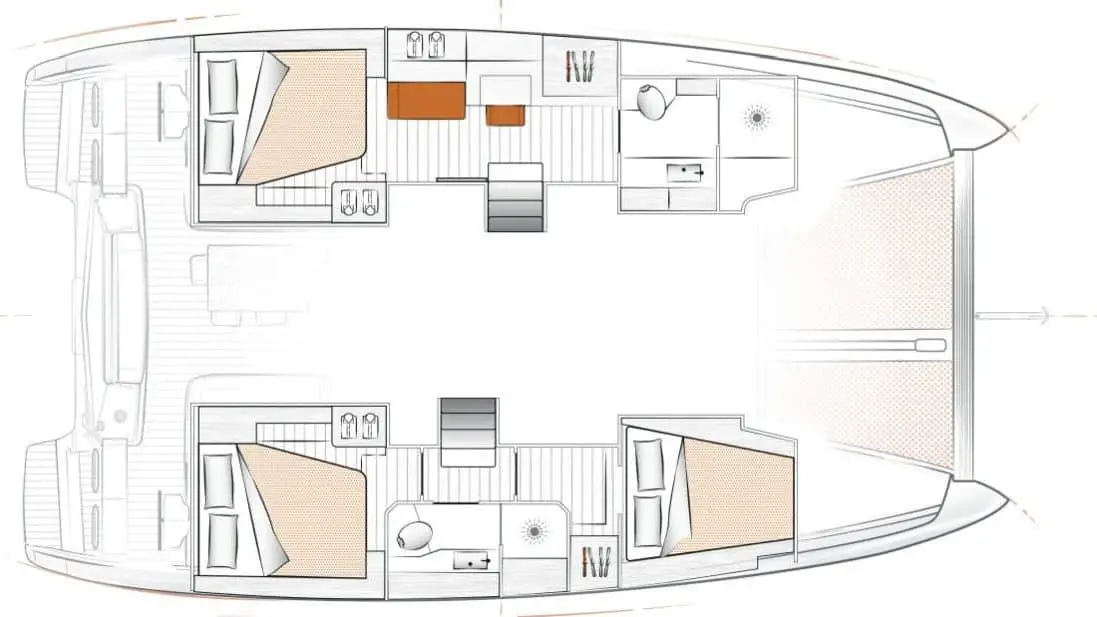
Build Convertible Main Living Spaces
The open cockpit is now a thing of the past. Instead, pioneering designers for catamaran manufacturers like Nautitech, Gunboat, and Catana now replace traditional-style salons, cockpits, and cabins with spacious indoor and outdoor living spaces. The concept involves merging separate saloon and cockpit areas with duplicate lounge spaces and the use of hard-wearing composite materials.
You can also design the cabin to suit your preferences. You may decide to add a cabin or remove one, add a bathroom, have the forward berth in the hull or on the wing deck.
- The design enhancements boost usable space while opening up the living areas.
- It reduces time and costs for interior maintenance and cleaning.
- Large windows bring in more light, increasing visibility.
- Luxurious, spacious, and airy owners’ cabins provide more comfortable living space.
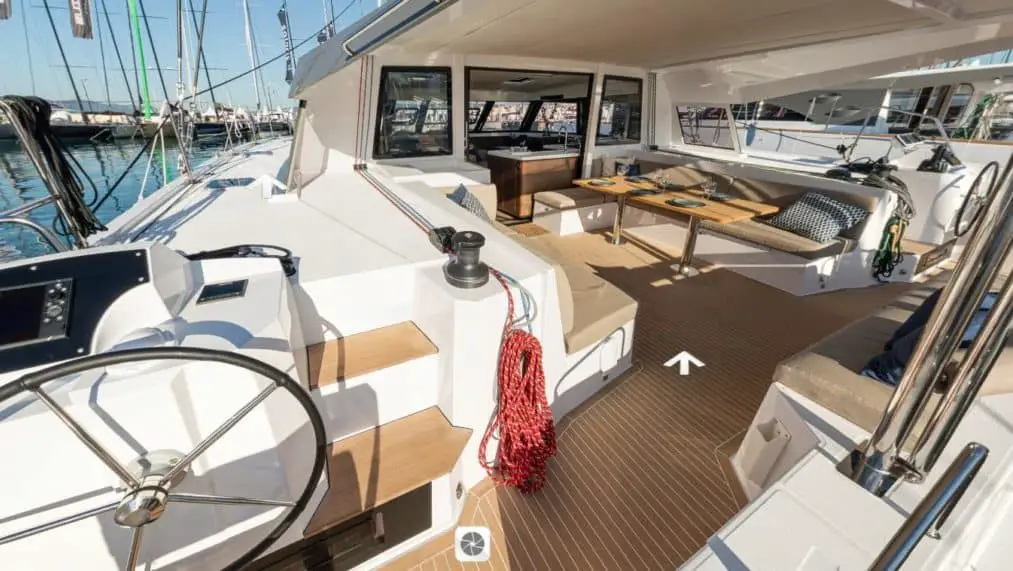
Bulkhead Helm Stations vs. Twin Stern Steering
Many catamaran owners have traditionally preferred bulkhead steering. This helm position remains popular, but twin stern steering positions come with more advantages since they provide greater sails visibility. The twin stern positions are also best suited for racing or day sailing since they often lack adequate protection for extended cruising.
Exposed helms are not ideal for a long ocean passage. Go for a safe, secure, and well-protected helm station that provides good visibility and comfortable space for long watches. Again, it’s best to have all control lines at the helm to establish a static control station. Also, have all push-button-controlled winches, instruments, windlass, and autopilot prominently located inside the cockpit.
- Twin stern steering positions give you a better view of the sails
- You get a better feel for overall sailing conditions.
- Twin stern steering positions lack the necessary protection for extended cruising.
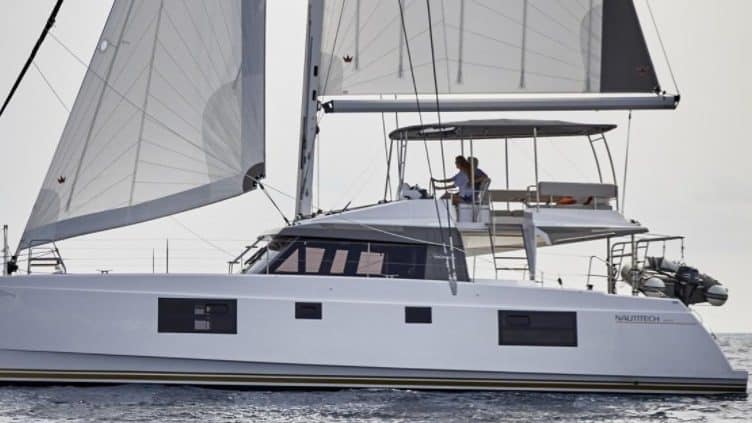
Go for the Flybridge Design
The flybridge design is appealing because it offers excellent visibility, more comfort, and additional entertainment and lounging space for everyone on board. Unfortunately for smaller boats – those below 50 feet (15.24m), there is minimal protection from the elements. As such, you might want to consider adding enclosures to offer protection. The flybridge, thus the helm, remains cut off from the vessel, which makes communicating with the crew a challenge.
- It provides great visibility.
- It offers comfortable spacing.
- It might be unsafe to move from the cockpit to the flybridge in bad weather.
- It isn’t easy to communicate with the crew.
Daggerboards vs. Fixed Keels
Average cruising catamarans typically utilize fixed keels while high-performance cats have daggerboards . Fixed keels allow you to beach your catamaran easily, and your hull remains intact if a collision occurs. While you lose some angle when sailing upwind, you gain more interior space in the hulls that you can put to good use.
Daggerboards are essential in a performance cruising catamaran since they guarantee that the boat delivers good upwind sailing, including during difficult situations. During long passages, they allow you to point better upwind though the drawback is that they consume much interior space within the cruising catamaran’s hulls.
Since flying on foils ( hydrofoils ) isn’t that practical on cruising catamarans, designers of larger-sized boats have also come up with modified daggerboards. These daggerboards produce lift and prevent leeway, too, thereby improving performance significantly, as seen with the Catana 59’s curved daggerboards. These foil-like daggerboards lift the boat ever so slightly upon reaching higher speeds, making it feel less heavy and much faster.
At the end of the day, calculating the performance of a boat sailing in a wide range of varying seas and winds might not be easy – despite a daggerboard or fixed keel configuration. This is because upwind speed depends not only on the sails’ quality but also windage and the height of the bridgedeck beyond the water.
- The design innovations -curved daggerboards and hydrofoils- improve catamaran performance significantly.
- Daggerboards enable you to access otherwise inaccessible anchorages.
- Daggerboards take up hull space in the hulls of your vessel.
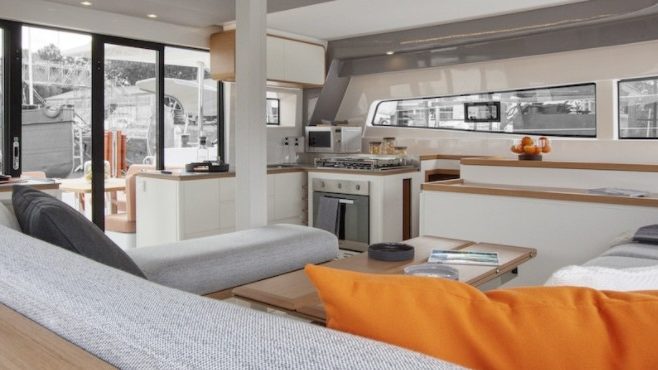
Galley Up vs. Galley Down
Galley layout are becoming more and more important as more people, including families, start sailing regularly. While at sea, your galley needs to be a safe place, well-ventilated, and functional. Everything should be well-thought-out for the sailor’s comfort, including handholds to make it safer to move around the boat.
While the galley location can either be up the bridgedeck or down in the hull, galley up appears to be the most popular trend. This makes the galley the focal point of both the living space and entertainment areas.
If you have a family, this placement is ideal since you make your meals from the galley and get to spend most of your time here. Many cruising families and couples prefer this arrangement and find separating the galley down the hull unappealing. Besides, carrying hot food up and down the staircase is unsafe.
Still, galley down is ideal for charter boats since it offers a private cooking area and uses up hull space efficiently.
- Having the galley on the bridgedeck is ideal for families and cruising couples.
- Placing the galley on a similar level with the serving area and cockpit is safer and less tiring.
- There’s better ventilation on the bridgedeck, making for comfortable cooking.
- There’s less kitchen privacy galley up.
- On smaller catamarans, this layout can impact the size of the saloon seating area significantly.
Production Catamaran vs. Custom
The choice of either a production catamaran or a custom design might seem pretty straightforward. Production catamarans from major brands come backed by proven designs, dependable construction, solid warranties, and many years of experience. The catamarans are easy to service, source for parts, and most – particularly the owner’s versions – hold on to their value, making them much easier to resell.
On their part, custom boats are fantastic in that you can tailor them to your exact needs. However, they might be more challenging to maintain or service. That’s because of parts unavailability and lack of construction knowledge.
Choose Quality Construction Materials
The best quality materials to use on your catamaran are both light and robust. While carbon fiber is great, plywood, plywood/epoxy, and strip-cedar are excellent materials too. What’s more, they are also affordable, so you don’t have to get too hung up on cutting-edge building materials. What matters is build quality; thus, a well-built plywood catamaran boat can last as long as a boat made from more high-tech materials.
Combining various materials also helps combat some of the issues that plague plywood boats in terms of resale value. At times, the design tends to make the boats appear pretty dated.
- Plywood and strip-cedar materials are affordable and provide excellent build quality.
- Plywood boats may have a lower resale value than those built with modern materials.
Consider Ease of Handling
An important factor in handling a cruising catamaran is deck layout. Most cruising catamarans sailed short-handed , so if your boat has one helm, all lines should run back here to allow for a static control station for the entire boat.
The other essential element is visibility from the helm. The 360 degrees of visibility while maneuvering, docking, or underway is crucial to your boat’s safety, as well as life and property. As such, you should be able to view both bows, or at least the pulpits and sterns, while standing at the helm. If not, you may have challenges handling the boat due to blind spots.
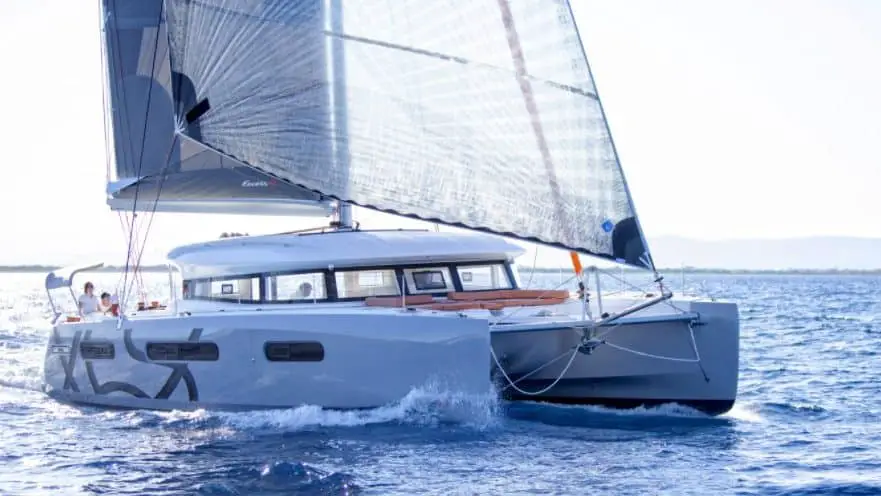
Consider the Load Carrying Capacity
A well-designed catamaran is enjoyable to sail in all weather conditions. It’s also much easier to handle than a monohull because of its widely spaced twin engines. But when you immerse extra hull depth, the vessel gets sluggish and moves slower, maneuvering in tight spots or when docking becomes more challenging. Furthermore, the hull submersion reduces bridge deck clearance, leading to hull slamming.
To allow for adequate load carrying capacity, you need a design that provides a generous displacement. This helps to ensure that you maintain reasonable bridge deck clearance even when fully loaded. It also allows you to avoid digging big holes in the water as you drag your transoms.
Displacement refers to the amount of buoyancy designed into the hulls, which essentially means that your boat will cruise better if its weight is less than your designed displacement.
Note that an overloaded catamaran not only loses out on performance but eventually, on safety too. To counter this, choose a lightweight catamaran with hulls bearing cored construction and interiors made of lightweight materials.
Remember, when you go cruising, you will need to carry fuel, extra water, supplies, equipment, and amenities, translating into thousands of extra pounds. Therefore, try and avoid the following design errors to ensure that your catamaran has an adequate load-carrying capacity:
- Avoid putting in place too much accommodation space.
- Avoid building a heavy boat ‐ use low-tech construction materials.
- Avoid installing inboards in a small boat.
- Lightly constructed catamarans perform faster and carry more weight.
- Cored construction makes for a strong and stiff catamaran, thus enabling good performance.
Final Thoughts
A well-designed cruising catamaran is a joy to behold. Today’s modern technological advancements mean that you can buy or build a light but strong cruising catamaran. And as you can see from this article, there are many excellent cruising catamaran layouts that you can choose from.
However, whichever layout you decide on needs to fit your sailing needs and purposes to ensure you remain comfortable and safe while at sea. Above all, ensure that you go for a vessel that you can handle with ease in all weather conditions.
Owner of CatamaranFreedom.com. A minimalist that has lived in a caravan in Sweden, 35ft Monohull in the Bahamas, and right now in his self-built Van. He just started the next adventure, to circumnavigate the world on a Catamaran!
Leave a Reply Cancel reply
Your email address will not be published. Required fields are marked *
Save my name and email in this browser for the next time I comment.
Recent Posts
Must-Have Boat Gear for Catamaran Sailors!
Sailing is probably the most gear-intensive activity I've ever done; there are so many decisions to be made about what gear to buy now, for tomorrow, and what to definitely never buy. The gear on...
6 Best Trailerable Trimarans For Bluewater and Coastal Sailing
Having a boat costs a lot of money, even when you are not using it, marina fees, etc. And once it is in the water most sailors never go very far from their "home marina" and sailing will be somewhat...
Your source for the latest news on yachts, boats and more. Read through our articles to find out how to compare boats and find the right fit for you!
Power Catamarans: A Complete Guide
Dec 06, 2023
less than a min
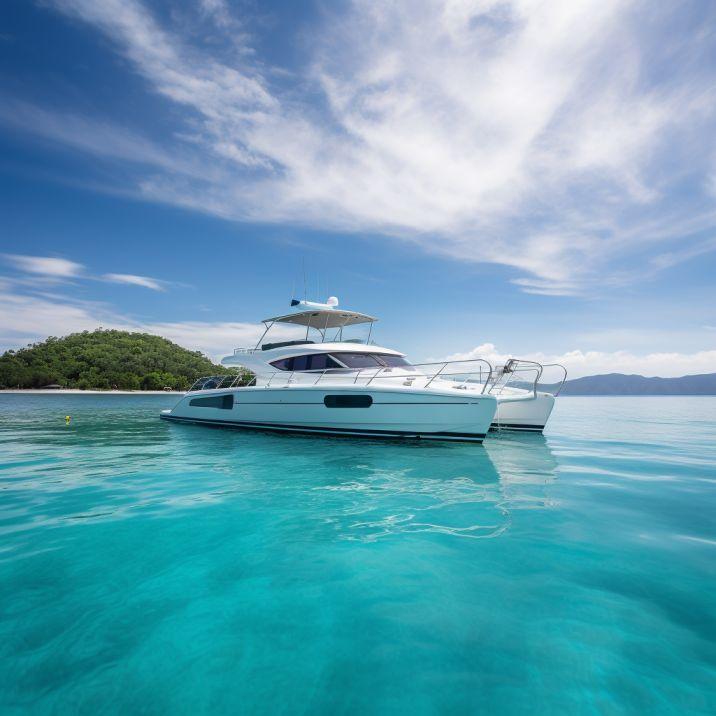
Power Catamarans, often termed as the epitome of modern maritime engineering, are gaining popularity for all the right reasons. Their distinct design, enhanced stability, and cruising efficiency set them apart from traditional monohull boats and even their sail-driven counterparts. This guide dives into the world of Power Catamarans, shedding light on their advantages and how they compare to other vessels like monohulls and trimarans.
Historical Prelude:
The concept of catamarans traces its roots back to ancient maritime cultures. However, the power catamaran is a relatively modern innovation that marries the traditional twin-hull design with powerful engines, offering a unique blend of speed, stability, and space.
Distinguishing Design:
Power Catamarans are characterized by their twin hulls, which significantly reduce the drag, thus enhancing speed and fuel efficiency. Unlike monohulls, they have a broader beam, which contributes to increased stability and more living space. The absence of a ballast for stability further lightens the vessel, contributing to its speed and fuel economy
Speed and Handling:
One of the significant advantages of power catamarans is their speed and handling. The twin hulls allow for a smoother glide over the water, making them particularly favorable for watersports enthusiasts. Their handling in rough waters is superior to monohulls, thanks to the inherent stability provided by the dual-hull design.
The stability of power catamarans is unparalleled, especially when compared to monohulls. The wide beam and twin hulls provide a stable platform, reducing the rocking and rolling common in monohulls. This stability is not only comforting in rough seas but also crucial when docking or anchoring.
Comfort and Space:
The spacious design of power catamarans offers homelike livability, with ample room for cabins, lounges, and even onboard amenities like grills and bars. The wide beam also allows for large deck spaces, ideal for sunbathing or enjoying the scenic ocean vistas.
Economy and Redundancy:
Power catamarans are economical, with fuel efficiency being one of their selling points. The redundancy built into their design, with separate engines for each hull, provides an added layer of safety, ensuring that the vessel can return to shore even if one engine fails.
Regular Upkeep and Care:
Power catamarans, given their unique design and structure, come with their own set of maintenance requirements. Like all boats, routine checks and upkeep are essential to ensure smooth sailing. The twin hull design means double the underwater gear – from propellers to rudders, which necessitates regular inspections for any signs of wear, tear, or fouling.
Antifouling:
Given that power catamarans have a larger surface area underwater due to their twin hulls, they may be more susceptible to marine growth. Regular antifouling treatments can help in keeping the hulls clean, ensuring optimal performance and fuel efficiency.
Engine Maintenance:
One distinct advantage of power catamarans is their dual-engine setup, but this also means double the engine maintenance. Regular oil changes, cooling system checks, and filter replacements are crucial. It's beneficial to synchronize maintenance schedules for both engines to ensure consistent performance.
The lifespan of a power catamaran largely depends on its build quality, materials used, and how well it's maintained. With proper care, a power catamaran can last for several decades. The engine's maintenance significantly impacts the catamaran's lifespan, with gasoline engines requiring maintenance at 1,200 to 1,800 hours and diesel engines at around 5,000 hours. The construction materials play a crucial role; for instance, fiberglass catamarans, when well-maintained, can last for many decades, while aluminum cats might change ownership after 10-15 years but can last a lifetime with proper care.
World-Renowned Builders:
The power catamaran sector boasts several reputable manufacturers such as Lagoon, Leopard Catamarans, Fountaine Pajot, and other notable names like Seawind Catamarans.
Lagoon, a revered name under the Beneteau Group umbrella, has carved its niche in crafting luxurious, spacious catamarans. A prime example is the Lagoon 630 Motor Yacht, embodying opulence with its nearly 250 sq. ft. aft deck and 900 sq. ft. interior, comfortably housing up to 12 guests. Known for its superyacht styling, it boasts superior fuel efficiency and a commendable average velocity-made-good of 9 knots.
Leopard Catamarans:
Emerging from the reputable Robertson and Caine shipyard in South Africa, Leopard Catamarans is synonymous with innovation and efficiency. The Leopard 53 Powercat is a testament to this legacy, showcasing excellent seakeeping abilities, offering 3 or 4 cabin configurations, and achieving a top speed of 25 knots.
Fountaine Pajot:
A trailblazer since 1976, Fountaine Pajot constantly redefines catamaran design. The Fountaine Pajot MY6 is a shining example, encapsulating the brand's visionary ethos. Stretching 15 meters, the MY6, equipped with dual engines of up to 2 x 353 Kw and 2 x 480 hp, promises dynamic sailing. Crafted meticulously by Pier Angelo Andreani, the interior mirrors a 20-meter monohull's spaciousness, reflecting modern aesthetics and comfort that stand as a benchmark in the Motor Yacht world.
These manufacturers continue to innovate, offering a blend of luxury, performance, and efficiency in their power catamaran models, making them a popular choice among maritime enthusiasts.
Comparing with Monohulls and Trimarans:
While monohulls are traditional and often cheaper, they lack the stability and space offered by power catamarans. On the other hand, trimarans, with three hulls, provide even more stability but at the cost of additional drag and less interior space.
TheBoatDB - Your Gateway to Maritime Exploration:
If you’re looking to delve deeper into the world of power catamarans and other vessels, TheBoatDB offers a comprehensive boat database. Explore various catamaran models, compare them with monohulls, trimarans, and other types of boats, and make an informed decision on your next maritime adventure.
In summary, power catamarans encapsulate a modern engineering marvel in the maritime domain. Their blend of speed, stability, comfort, and economy makes them an attractive option for a broad spectrum of boaters. Whether you are a long-distance cruiser, a water sport enthusiast, or someone who cherishes the tranquility of the sea, a power catamaran could be the vessel that transforms your maritime adventures into unforgettable experiences.
You might like these too

Sailboat or Motorboat – Learn the pros and cons lg ...
Aug 24, 2022

Types of Catamaran Boats: Sailing, Power, and Luxury Catamarans lg ...
Feb 10, 2023

Which is better a wooden boat or fiberglass boat lg ...

What are the main types of sail rigs for sailboats lg ...

Which is the Best Economical Catamaran lg ...
Oct 04, 2021

What is a Chine on a Boat lg ...
Oct 01, 2021
PROA HULL DESIGN
The advantages of proa hull design.
Setting out with the goal of building the most efficient boats we could, our founder Larry Graf and his designers sought to create earth-friendly cruisers that would inspire a new generation of boaters. And because Larry and his team played a hands-on role in developing some of the world’s best catamarans, they had an idea of what a boat could be in terms of comfort, stability, and fuel economy.
When one looks at catamarans vs. monohulls, the starting point is clear. The many advantages catamarans exhibit when compared with monohulls are an excellent starting point. Catamarans offer a stable ride with predictable hull movement. The seakeeping is excellent, even in rough conditions. Another advantage the design provides: incredible onboard space. The space of a catamaran is often comparable to that of a monohull that is 25 percent longer. Catamarans also have been proven to provide efficient operation.
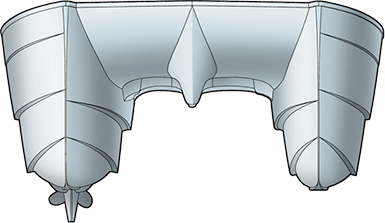
A Different Kind of Catamaran
The concept was formed, and extensive testing was done to both prove and refine the design until the hull form we have today was established and then patented.
The first boats were single-engine diesels, with all propulsion confined to the larger starboard hull. This hull has the appendages including a keel, prop, and rudder. The hull forms are hydrodynamically designed so that power on one side creates straight tracking when the rudder is centered. If it were not for this, and rudder was needed to make the boat track straight, the constant rudder movement would create additional drag. The proa hull form works efficiently with both inboard and outboard power. Performance and stability remain unmatched whether powered by a single diesel or two gas outboards.
The shape of the tunnels from fore to aft is also precisely crafted. The forward section is designed to cut through wave tops, when in extreme conditions, creating a slight amount of lift as the vessel enters the wave with no slapping. The water funnels back into the tunnel flowing evenly and exiting at the stern. This tunnel design keeps water flowing and reduces wave impact much better than the tunnels of other catamarans.
The wider starboard hull provides more space for the accommodations, and also makes it easier to access and manage the engine and machinery. The proa hull on the portside is 35 percent narrower, but its actual drag is reduced by approximately 50 percent due to fluid dynamics. A hull that is a little thinner maintains the buoyancy required to keep the boat running true but requires a lot less energy to move through the water. This makes a big difference in efficiency.
Our patented proa design for inboards uses just one engine, one shaft, one prop, one rudder, and one keel—half the typical engine appendage drag of a twin-engine design. The hulls are shaped to compensate for the engine torque. Since both fluid-dynamic and engine-torque forces are proportional to speed, the boat runs straight at every speed. Even better, the single-engine design saves dramatically on machinery weight, which in turn, saves on the required structural-component sizes and fuel needs, and their corresponding weight. This reduces the boat’s weight by around 44 percent. Less weight also equals much less drag. Thanks to solid engineering principles and innovation, our boats strike the perfect balance for the environment: comfortable and efficient.

A second round of innovation was conducted on the outboard-powered boats. Originally the second engine was to allow for a trolling motor, but testing and further refinement led to the two-engine configuration. By thinking even further outside the box, we created an asymmetrical installation that has not been seen previously: one 200-horsepower Yamaha on the larger hull, matched to a 70-horsepower outboard on the smaller hull. With the option to run on both engines or on the single larger outboard, or even just on the smaller outboard, we are able to see the advantages in efficiency.
Patent No. US 8,109,221 B2
Stay Up to Date with Aspen Sign up to receive our enewsletter.
11656 Knudson Rd. Burlington, WA 98233
Privacy Policy
Tell us your Aspen Story .
© Copyright 2012 - 2024 | Aspen Power Catamarans
(360) 668-4347 EMAIL US

Service Locator
- Angler Endorsement
- Boat Towing Coverage
- Mechanical Breakdown
- Insurance Requirements in Mexico
- Agreed Hull Value
- Actual Cash Value
- Liability Only
- Insurance Payment Options
- Claims Information
- Towing Service Agreement
- Membership Plans
- Boat Show Tickets
- BoatUS Boats For Sale
- Membership Payment Options
- Consumer Affairs
- Boat Documentation Requirements
- Installation Instructions
- Shipping & Handling Information
- Contact Boat Lettering
- End User Agreement
- Frequently Asked Questions
- Vessel Documentation
- BoatUS Foundation
- Government Affairs
- Powercruisers
- Buying & Selling Advice
- Maintenance
- Tow Vehicles
- Make & Create
- Makeovers & Refitting
- Accessories
- Electronics
- Skills, Tips, Tools
- Spring Preparation
- Winterization
- Boaters’ Rights
- Environment & Clean Water
- Boat Safety
- Navigational Hazards
- Personal Safety
- Batteries & Onboard Power
- Motors, Engines, Propulsion
- Books & Movies
- Cockpit Confessions
- Communication & Etiquette
- Contests & Sweepstakes
- Colleges & Tech Schools
- Food, Drink, Entertainment
- New To Boating
- Travel & Destinations
- Watersports
- Anchors & Anchoring
- Boat Handling
- ← Seamanship
The Planing Power Catamaran: A Different Kind Of Cat
Advertisement
Planing powercats deliver the high speeds dayboaters and weekend anglers crave — but without so much pounding in choppy seas.
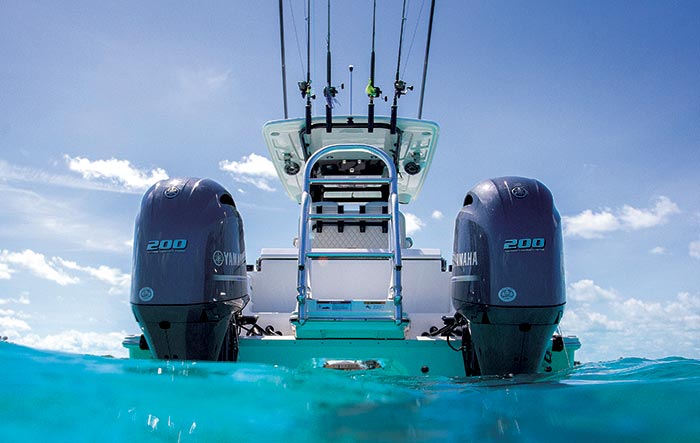
The air cushion created between the two hulls dramatically reduces wave impact at running speeds. (Photo: World Cat)
Powercats are different beasts than sailing cats, and the powercats you're most likely to see on your local waters are those in the 20- to 40-foot range (like my 22-foot Glacier Bay). Unlike the big cruising powercats, which are more like cat trawlers with top ends maybe a little over 20 mph, smaller cats have planing hulls that perform much like today's modern powerboats.
Depending on the engine package, there are a few cats that top out in the lower 30s, lots in the lower 40s, some in the 50s, and a few that break 70 or even 80 mph.
While a similar length monohull may have a 40-mph cruising speed in a 2-foot chop, the monohull captain will pull back the throttles and cruise at 30 to avoid being beaten up. The cat guy, on the other hand, may be able to keep on doing 40 thanks to the smoother ride. But having two hulls underfoot does create some interesting similarities in how these different types of boats react to input from the helm. So you'll see a few of the tips here mirror those used for sailing or cruising catamarans. Whatever type of cat you may be captaining, remember the following:
- Center the wheel and use only the throttles to control the boat. Powercats have their engines exceptionally widely spaced apart, and are far more responsive than monohulls when steered via throttles. Generally speaking, turning the steering wheel will only serve to reduce the effectiveness of working the throttles. This, of course, is assuming you have two engines. There are a few rare cats with one engine.
- At identical rpm, the engine in forward will create more thrust than the engine in reverse. So even if the throttles are set evenly when opposed, the boat will likely slide forward a bit as opposed to spinning in its own length. As a result, when attempting to speed up the maneuver it's usually best to favor giving the reversed engine extra oomph as opposed to the one in forward (assuming you don't want to move forward while turning the boat).
- Check the speed and direction of the wind before docking , and remember that some cats, particularly those with low draft, can be blown around more easily than many monohulls as there may be less hull below the waterline.
- When docking in a new slip for the first time with lines that haven't been preset, bear in mind that once you're docked, securing the boat can be difficult in some situations because few powercats have centered cleats. Most will have a single cleat on either side, in some cases obstructed by a bow rail and/or pulpit, which can make crossing lines difficult.
- Never shut those engines down until all the lines are secured . Again, remember that many cats can get blown out of kilter faster than the average monohull, and if you don't have lines preset, it may take a moment to figure out how to best secure them. Many a captain has done a perfect docking job and then shut off the engines, only for a gust of wind to push the boat right back out of the slip before the lines can be tied. Keep those engines running until the boat is 100% secure so you can apply power, if necessary, to maintain position.
Why Two Hulls?
Like all boats, catamarans come with distinct advantages (smooth ride, draft), and areas of compromise (docking, turning). Regardless of design aesthetics, the first question is usually: Why two hulls?
Mike Myers, vice president of product development for World Cat explains: "Catamaran hulls experience little to no drag or resistance to get on plane, resulting in greater fuel economy. They have a steady rise in speed and fuel burn with little to no spikes in fuel consumption."Planing powercats have a unique trait — which many cat lovers consider the top advantage over monohulls — the impact-absorbing cushion of air created by a compression tunnel between hulls.
And when it comes to beam, catamarans' parallel hulls create reliable stability, which helps to avoid heeling and capsizing, and greatly reduces the vessel roll at rest and at trolling speeds.
"Many boats are primarily designed around comfort for the captain. This usually means anyone at the front or sides of the boat takes most of the jostling,"Myers says. "The catamaran-style hull delivers ride comfort, smoothness, load distribution, and stability."That stability draws anglers to powercats of typically 20 to 40 feet; and cruisers to sailing cats 40 to 60 feet and beyond.
— Rich Armstrong
Taming The Cat
When it comes to handling powercats in open waters, the most important thing to remember is that all boats are different. Just as you wouldn't lump the handling characteristics of all monohulls together, the same goes for powercats. But many have a few common traits to consider.
- Some powercats have relatively low buoyancy in the bow compared to monohulls, as many have very narrow hull entries . As a result, in some cases, idling into a sea can allow waves to break over the bow. Gaining some headway so the bow rises a bit and packs air into the tunnel can alleviate the issue.
- Some planing powercats will run smoother at faster speeds than slower speeds, as they compress air in the tunnel between the two hulls. In these cases, speeding up may actually provide a more comfortable ride in some sea states as compared to slowing down. Depending on your boat, its tunnel may result in other differences from the monohull that you may be familiar with. Learning about these will improve you experience.
- Some powercats display a "snap roll,"which is a very fast righting motion that can rock the boat uncomfortably, especially when drifting in a beam sea. In these cases, people who may want to drift often (such as anglers) will sometimes deploy a drift sock off the bow to reduce rocking and rolling.
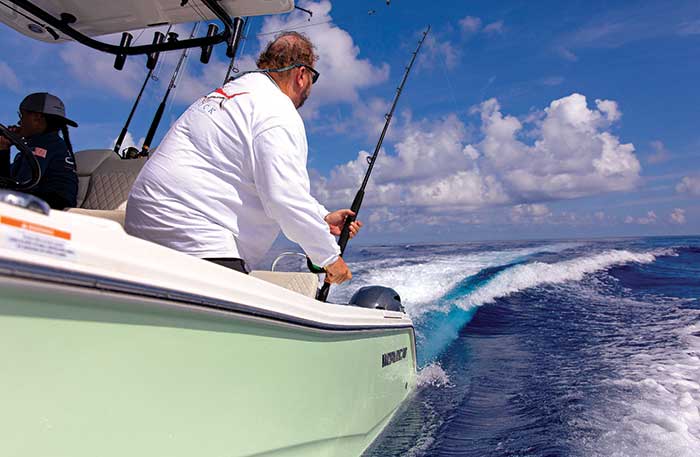
Photo: World Cat
- In general, powercats are often more weight-sensitive than monohulls, especially when the bow is loaded down . It's always best to be aware of how you're loading your boat, and if the tunnel is slapping or the bow is digging into waves, consider shifting weight aft.
- Some powercats, particularly older models, lean out in a turn rather than banking in. There's no way to eliminate this phenomenon (although trimming up an outboard engine when initiating a turn may reduce it a bit), so it's important to give passengers a warning to hold on before making any aggressive maneuvers.
- "Sneezing,"or blowing a puff of mist out the front of the tunnel that the boat then runs through (getting everyone aboard damp), is a phenomenon associated with some powercats. In many cases, trimming the bow up a bit will significantly reduce or even eliminate sneezing.
Related Articles
The truth about ceramic coatings for boats.
Our editor investigates the marketing claims of consumer-grade ceramic coatings.
Fine-Tune Your Side Scan Fishfinder
Take your side-scanning fishfinder off auto mode, and you’ll be spotting your prey from afar in no time
DIY Boat Foam Decking
Closed-cell foam flooring helps make boating more comfortable. Here’s how to install it on your vessel
Click to explore related articles
Lenny Rudow
New Boats, Fishing & Electronics Editor, BoatUS Magazine
Top tech writer and accomplished sports fisherman, BoatUS Magazine Contributing Editor Lenny Rudow has written seven practical boating books, won 30 awards from Boating Writers International — many for his marine electronics articles – and two for excellence from the Outdoor Writers Association of America. He judges the NMMA Innovation Awards, and is Angler in Chief at FishTalk, his own Chesapeake-based publication. A great teacher and inspirational writer, Lenny hosts many of BoatUS Magazine’s very-popular how-to videos, which can be found on the BoatUS YouTube channel, or at BoatUS.com
BoatUS Magazine Is A Benefit Of BoatUS Membership
Membership Benefits Include:
Subscription to the print version of BoatUS Magazine
4% back on purchases from West Marine stores or online at WestMarine.com
Discounts on fuel, transient slips, repairs and more at over 1,200 businesses
Deals on cruises, charters, car rentals, hotel stays and more…
All for only $25/year!
We use cookies to enhance your visit to our website and to improve your experience. By continuing to use our website, you’re agreeing to our cookie policy.

Driftboat Wood Kit
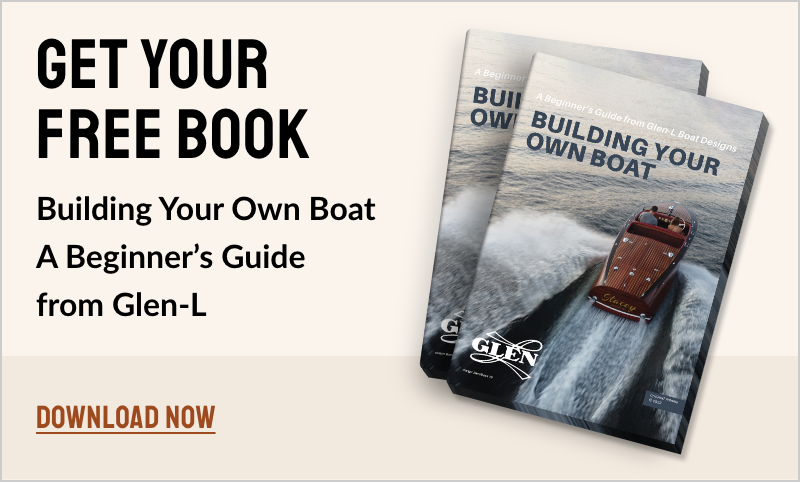
Boatbuilders FORUM
Boat plans, patterns and supplies for the amateur boat builder.
Every year, thousands of amateurs much like yourself build their own boats the proven Glen-L way. Many builders save 50% or more over the price of a factory-built boat. It’s easier than you might think, and it can be a rewarding experience.
Industry experts
Established in 1953
300+ Models
International shipping
Plans & Patterns

All plans come with a 30-Day money back guarantee.

Providing boat Plans & memories Since 1953
For more than 60 years Glen-L has been the world’s premier supplier of boat plans and patterns designed for the amatuer builder. We make it even simpler by offering associated supplies and hardware kits for each design.

More Products

Boatbuilding hardware

Books, DVDs, & Audio

Tools & Raptor® Fastenings

Epoxy and Supplies
Featured designs.

View Plan Details

Cabin Skiff


The global authority in superyachting
- NEWSLETTERS
- Yachts Home
- The Superyacht Directory
- Yacht Reports
- Brokerage News
- The largest yachts in the world
- The Register
- Yacht Advice
- Yacht Design
- 12m to 24m yachts
- Monaco Yacht Show
- Builder Directory
- Designer Directory
- Interior Design Directory
- Naval Architect Directory
- Yachts for sale home
- Motor yachts
- Sailing yachts
- Explorer yachts
- Classic yachts
- Sale Broker Directory
- Charter Home
- Yachts for Charter
- Charter Destinations
- Charter Broker Directory
- Destinations Home
- Mediterranean
- South Pacific
- Rest of the World
- Boat Life Home
- Owners' Experiences
- Conservation and Philanthropy
- Interiors Suppliers
- Owners' Club
- Captains' Club
- BOAT Showcase
- Boat Presents
- Events Home
- World Superyacht Awards
- Superyacht Design Festival
- Design and Innovation Awards
- Young Designer of the Year Award
- Artistry and Craft Awards
- Explorer Yachts Summit
- Ocean Talks
- The Ocean Awards
- BOAT Connect
- Between the bays
- Golf Invitational
- BOATPro Home
- Superyacht Insight
- Global Order Book
- Premium Content
- Product Features
- Testimonials
- Pricing Plan
- Tenders & Equipment

On board the 28m hybrid catamaran coming to the Cannes Yachting Festival 2024
As the Cannes Yachting Festival 2024 rapidly approaches, Wider Yachts has announced the display of its 28.4-metre WiderCat 92 . With five units already sold and the second hull recently completed and commissioned, the event offers buyers the opportunity to experience the hybrid propulsion technology of the catamaran firsthand.
Built in Fano, Italy, the 242GT semi-displacement yacht showcases naval architecture by the Wider engineering team, as well as exterior and interior design by Luca Dini and Centro Stile Wider. “The first public showing of the WiderCat 92 at the Venice Boat Show was a great success, where it quickly became a standout attraction,” says Alan Knight, sales manager at Argo Yachting. “We are thrilled to bring this remarkable vessel to the Cannes Yachting Festival, where we anticipate international visitors will appreciate the vast space and advanced technology that the Wider team has developed. This long-anticipated event is very exciting for all concerned, and we look forward to welcoming new customers on board.”
Enhanced space and comfort
The WiderCat 92 provides ample space and comfort with its generous layout and thoughtful design. An expansive upper deck and spacious lower deck complement the 100 square metres of main deck space. The upper deck is customisable, featuring a forward cockpit tailored to include a dinette, lounge area or even a Jacuzzi.
Designed to accommodate up to 10 guests across five cabins, along with a crew of four, the lower deck offers a standard layout that includes two VIP cabins and an additional ensuite double guest cabin, while the master is on the main deck forward. Each cabin can be designed with individual colour schemes for a personal touch and features sound-proof flooring throughout.
“The 12-metre beam provides incredible deck space for everyone on board, and the view from the master cabin is truly stunning,” says Knight. “Guests in the two VIP cabins can even enjoy their own side beach club areas."
At the stern, the 67-square-metre beach club on the lower deck is a standout feature, complete with fold-down platforms on both the port and starboard sides at water level. The nearby garage has space for a 5.5-metre tender and water toys.
"The Wider factory has invested vast amounts of time on this project, using its team’s experience of customer requirements to maximise the space,” highlights Knight. “Where possible, they will always consider a customer’s design change to ensure the customer receives the very best experience from their new yacht.”
Hybrid power and solar technology
At the forefront of innovation, the yacht integrates hybrid technology with solar energy to deliver a more eco-friendly and efficient cruising experience.
At the heart of its technology is a powerful 360kW lithium polymer battery set, designed to efficiently store and supply electricity. This system is complemented by variable-speed generators that recharge the batteries as needed, allowing for extended cruising ranges with optimal efficiency. The yacht's lack of a traditional drivetrain also frees up additional interior space for guests to enjoy. Solar panels spanning 140 square metres further enhance the WiderCat 92’s eco credentials by topping up the battery bank.
Onboard monitoring systems provide real-time insights into power usage, ensuring that every aspect of the vessel's operation is transparent and manageable. In pure electric mode, the WiderCat 92 can cruise for 25 nautical miles at six knots before the generators automatically engage. With a maximum speed of 14 knots and a cruising speed of 12 knots, the yacht offers a range of approximately 1,600 nautical miles at cruising speed. At an ecological speed of six knots, the range extends to 2,400 nautical miles.
The battery capacity enables up to 12 hours of operation while at anchor. Additionally, the WiderCat 92 features dynamic positioning technology - a satellite-controlled system that automatically maintains the yacht's position and heading without the need for anchoring. This feature not only supports zero-emission stops but also protects the seabed from anchor damage and permits mooring in areas with anchoring restrictions.
The WiderCat 92 is currently available through Argo Yachting for customers in the UK and Germany, offering an opportunity to experience cutting-edge technology and embark on global adventures. For more information or to book a viewing at the Cannes Yachting Festival 2024, contact Argo Yachting today .
Sponsored content created for Argo Yachting
custom catamaran fishing boats
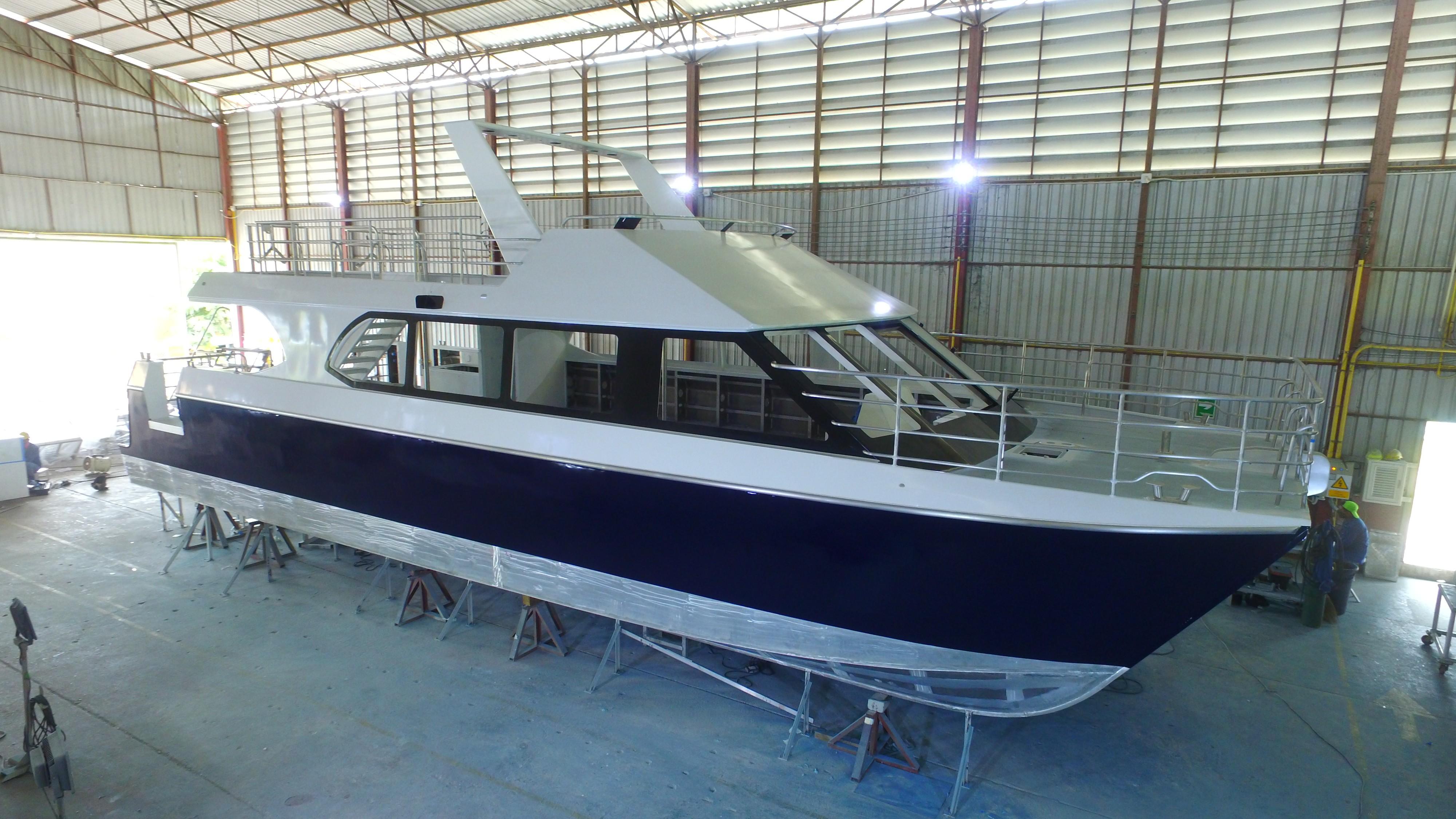

- Ultimate Drives
- Ultimate Gift Guide
- Editor's Picks
- Robb Recommends
- DESTINATIONS
- HOME DESIGN
- REAL ESTATE
This Speedy 70-Foot Power Catamaran Is Designed To Cut Through Rough Waters
Howard walker.
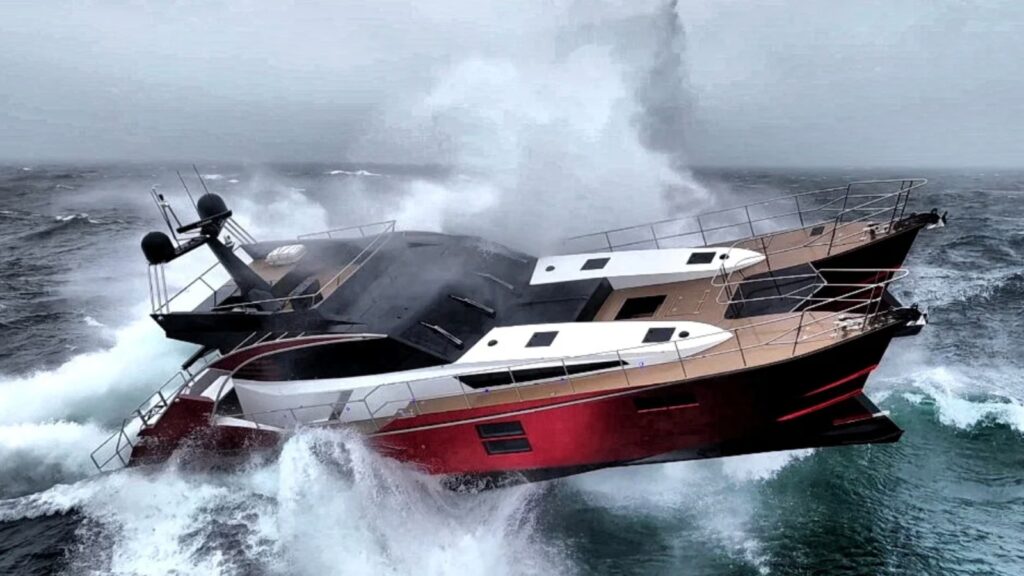
Back in April, Storm Kathleen slammed into the west coast of Ireland as a fearsome Force 10 gale, packing 113 km/hr winds and 15-foot waves. While locals sandbagged their homes and prepared for the worst, Frank Kowalski decided it was a swell day for a boat ride.
As owner of Safehaven Marine in County Cork, he’d just launched his brand-new, 70-foot T-2000 Voyager all-weather power catamaran. What Kathleen offered was a chance to put the new super-cat through its paces.
“We knew from scale-model tests that she should be able to tackle waves of more than 65 feet high,” Kowalski tells Robb Report . “But you never know until you’re out there. In the height of the storm, she just shrugged off the waves and weather and performed flawlessly.”
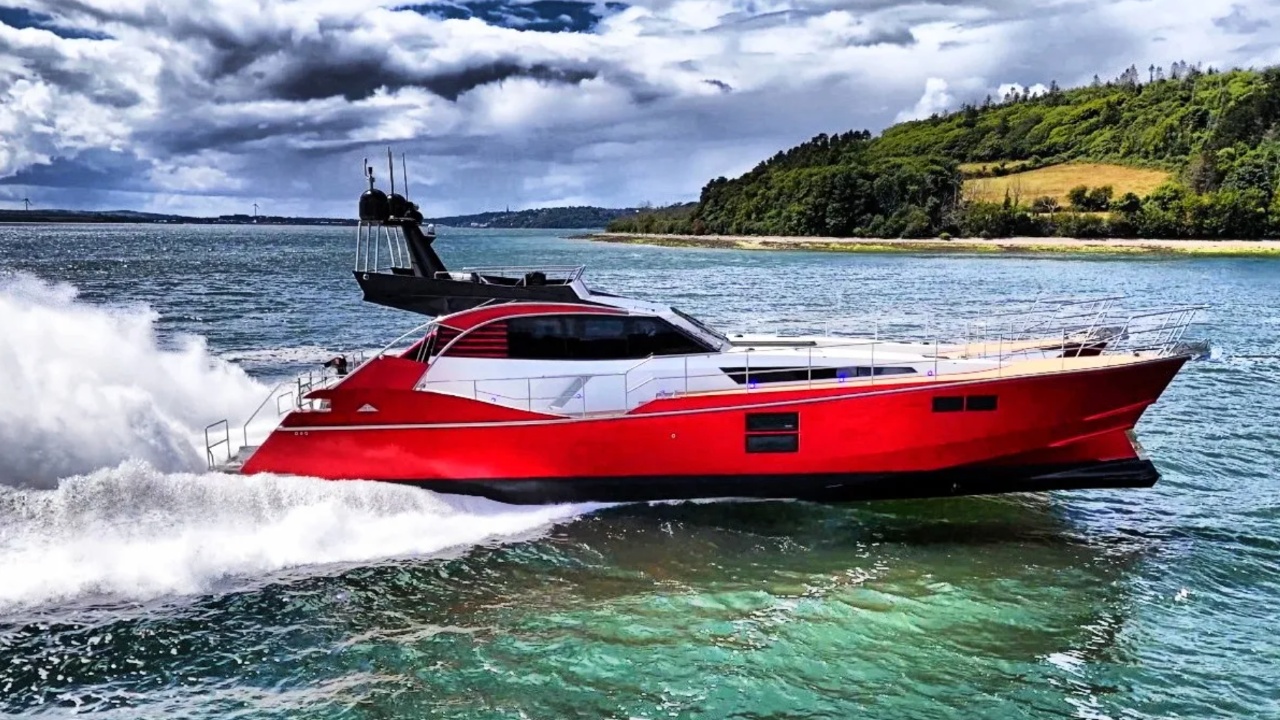
Evolved from Safehaven’s 75-foot XVS20 monohull launched in 2018, Kowalski used his expertise in building commercial, work-boat power catamarans to design the twin-hulled T-2000 Voyager to offer speed with stability.
“The stability in beam seas is what’s key here,” he says. “While we were out recently in a Force 8 with 40-plus knot winds and 12-foot seas, we were able to stop and leave the boat to drift while we retrieved a drone. It just took the waves on the beam with ease. In a monohull, it would have been rolling so badly you couldn’t have stood on the deck.”
Then there’s the sheer velocity that comes with twin, scalpel-thin hulls slicing through waves. With the T-2000’s pair of 1,550 hp MAN V12 diesels driving France Helices SD5 surface drives, the Safehaven can hit a top speed of 91.73 km/hr.
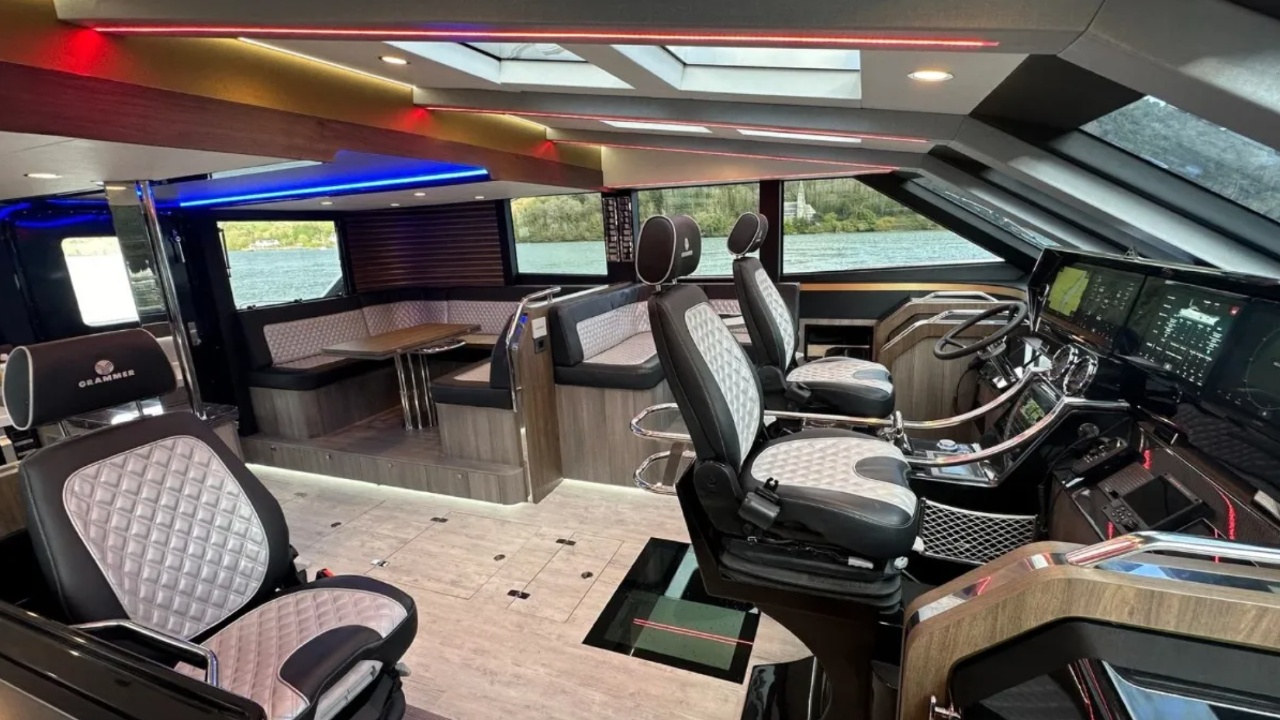
“It’s just the most amazing sight, standing on the stern, watching these huge roostertails behind,” Kowalski adds. “We’ve also incorporated retracting swim platforms so you can see the props spinning on the surface, plus valved exhausts that switch between silenced and straight-through. The noise from those V12s is sensational.”
While Safehaven has been building its Wildcat range of 40-, 53-, and 60-foot power cats for everything from oil-rig support, crew transfer, and even as a military cruiser for Britain’s Royal Navy, they were always pure, no-frills work boats. With this new T-2000, Kowalski is looking to appeal to private buyers searching for something a little different.
His hull No. 1 demonstrator boat has all-diamond-quilted marine leather, well-finished cabinetry, colored LED lighting, and below-deck accommodations for six in three cabins. Hull No. 2—already sold and due for completion in the next 18 months—will up the luxury factor.
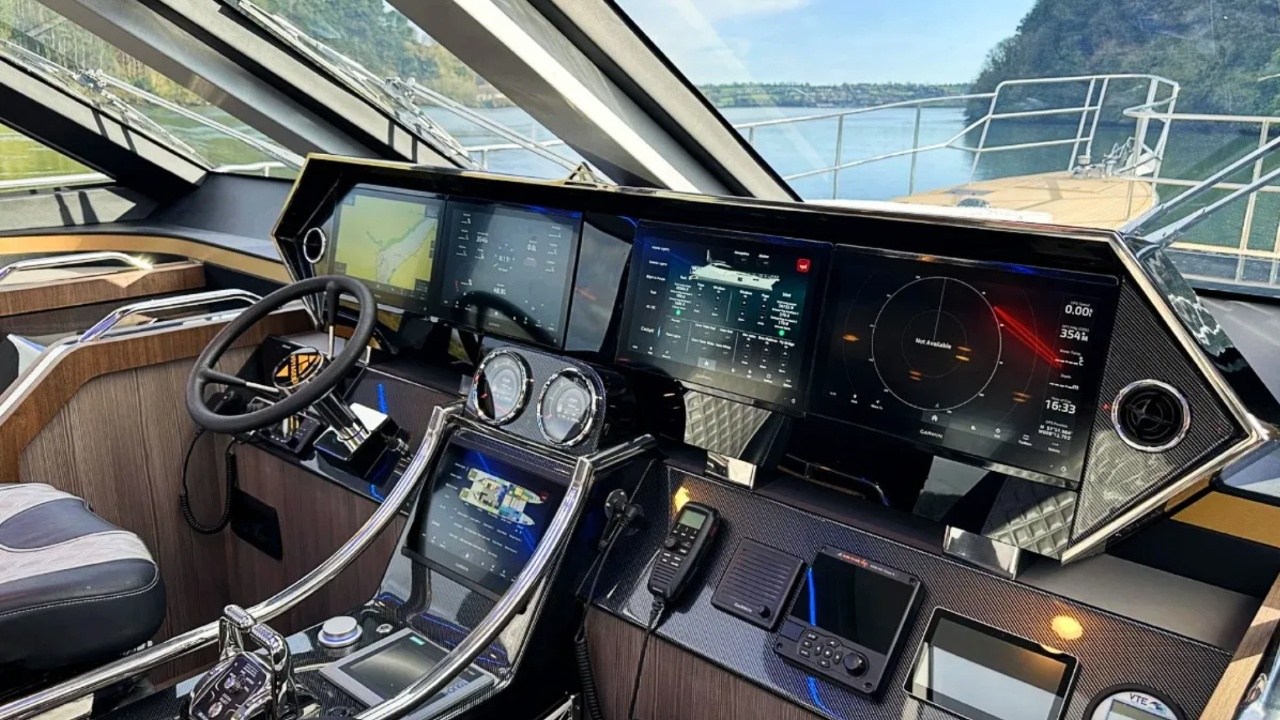
“It’s going to a client in the Middle East who plans to use it for just himself and his wife,” says Kowalski. The client has specified a full-width owner’s suite with a central, king-size bed and oversized his-and-hers bathrooms and closets in each hull. “He also wants to go fast—very fast,” Kowalski continues. “So we’ll install twin 2,000 hp MAN V12s, again with surface drives, and a central hydrofoil to reduce drag. The plan is for it to hit a top speed in excess of 69 mph.”
The new T-2000 is also designed to go the distance. With the 2,900-gallon tanks, it has a range of more than 1,000 nautical miles at 34.5 mph, and 1,700 nautical miles at 18 mph. Throttle back to 12 mph and range increases to 3,000-plus nautical miles.
Much of this is down to the yacht’s symmetrical, semi-wave-piercing hulls, made of a carbon-fiber-composite construction, with inverted lower bow sections and a double-chine arrangement that projects spray clear of the boat. The hydrofoil in mid position also means that, at speed in calmish seas, the T-2000 rides with half its hull length out of the water.
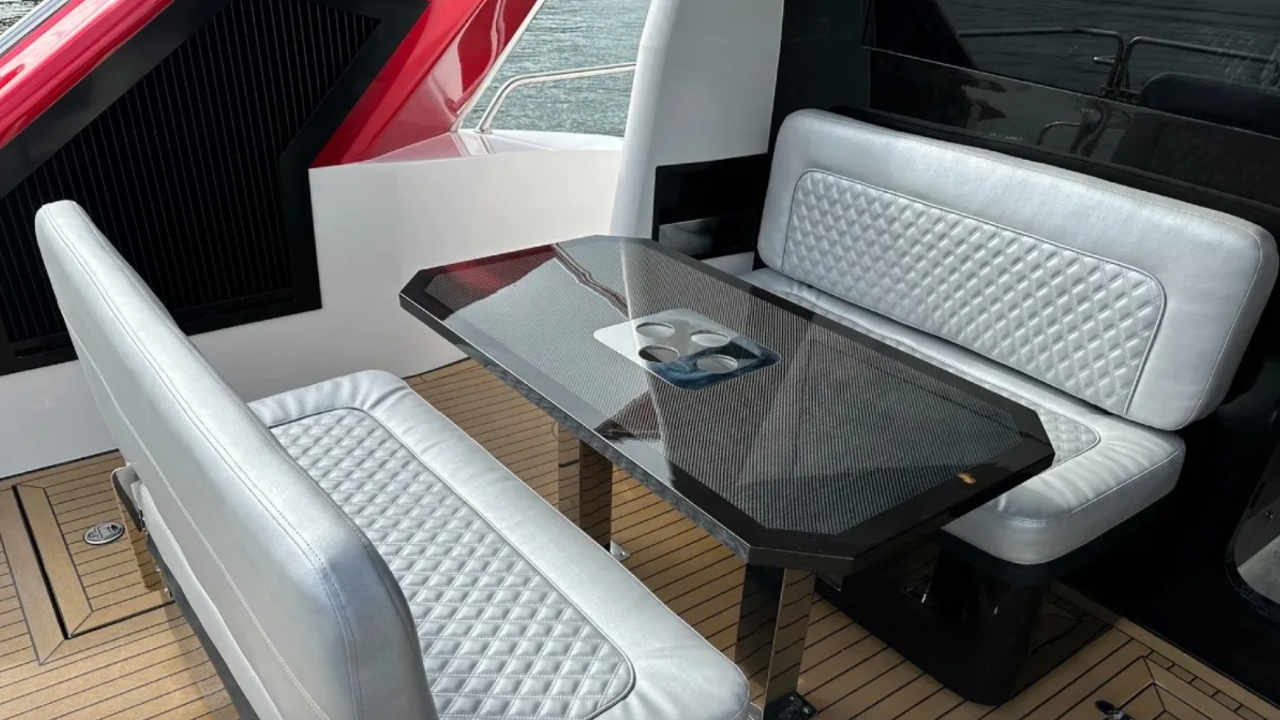
To eliminate waves slamming into the bridge deck windshield, Kowalski moved the pilothouse farther back. It also makes for a sleeker profile, giving the T-2000 the look of a single-hull sportsyacht.
As for creature comforts, the main, open-plan salon features an L-shaped Corian-topped galley, with a U-shaped dinette opposite. To enjoy the action, there are bucket-style, shock-absorbing seats for the captain and copilot, a wraparound sofa on the port side, and a single bucket seat to starboard.
The entire helm area gets flooded with light courtesy of the four-panel, angled windshield and quartet of fixed skylights above. To see the boat’s hydrofoil in action, the bridge has a glass panel in the floor that’s also designed for viewing marine life below at night. Most of the windows have half-inch-thick toughened panels to shrug off cascading water.
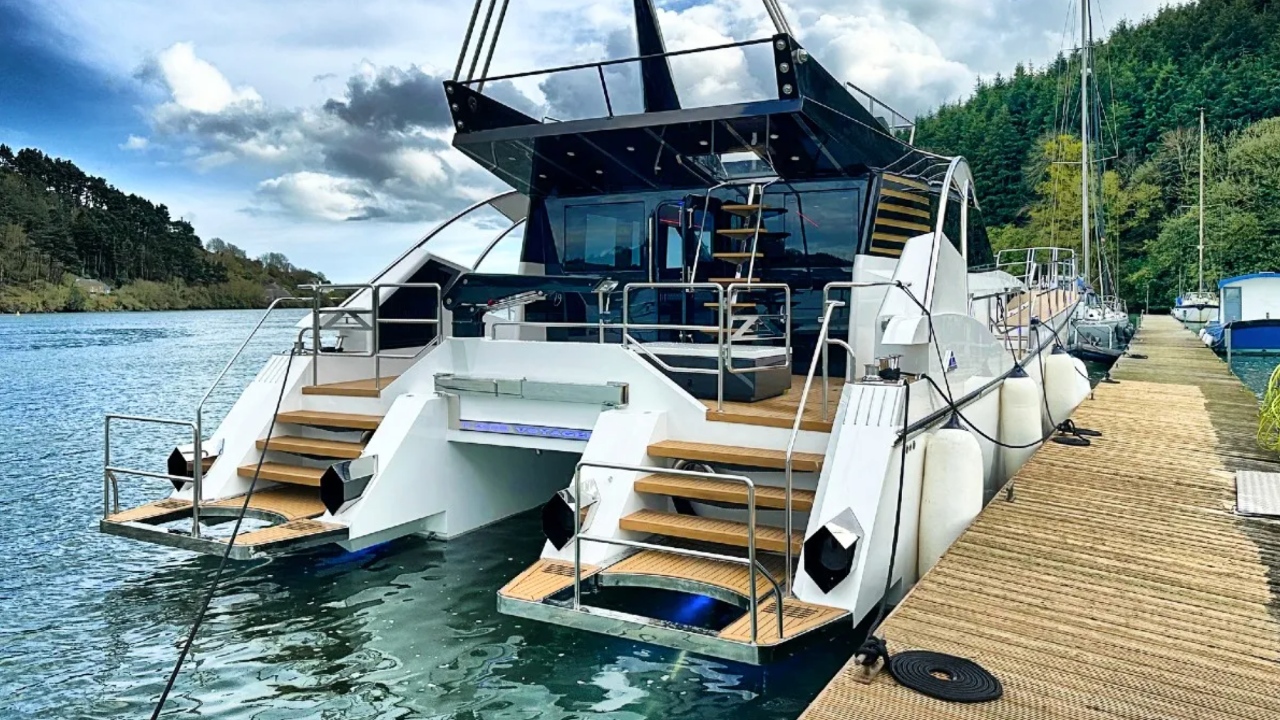
In finer weather than typically found on coastal Ireland, the T-2000 has a small flybridge with a helm station and sun-lounge area up top, plus a covered stern cockpit with sofas and table for alfresco dining.
This storm-tested, metallic-red demonstrator is available for around $3.35 million (RM14.55 million)
Safehaven Marine
Previously published on Robb Report USA
Most Popular

People | Wheels
Power Individuals: Anas Zawawi Khalid Of Rolls-Royce Motor Cars Kuala Lumpur
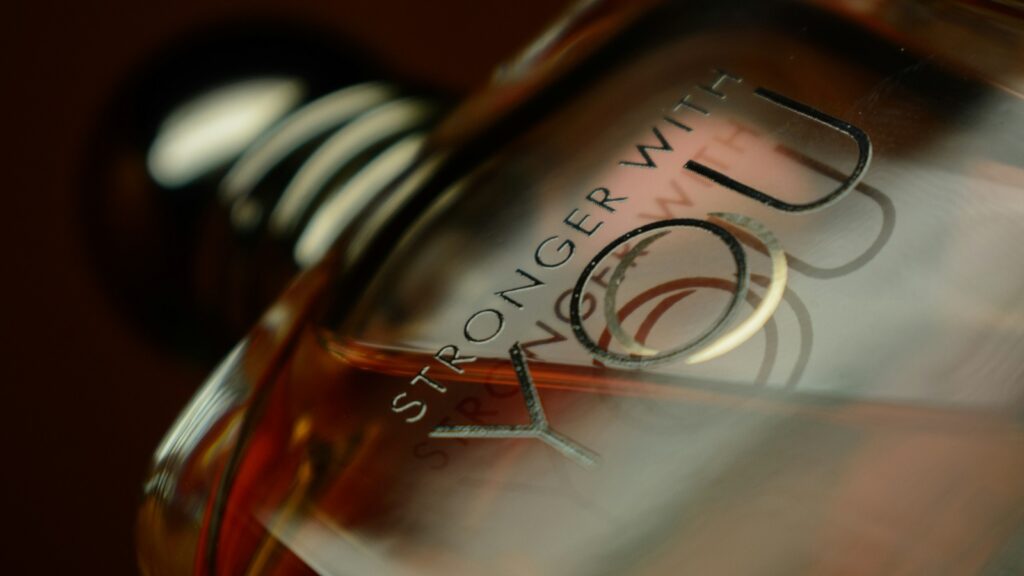
From Diptyque To Tom Ford, You Should Own These 15 Freshest Summer Colognes For Men

Mangala Estate Boutique Resort’s Founder Dato’ Franky Chua on His Love of Nature & Creating His Own Ecosystem

12 Unique Mooncake Gift Boxes And Mid-Autumn Festival Experiences This 2024

Fashion | Timepiece
Urwerk Has A Handsome Tribute To 'Star Trek' And Spock
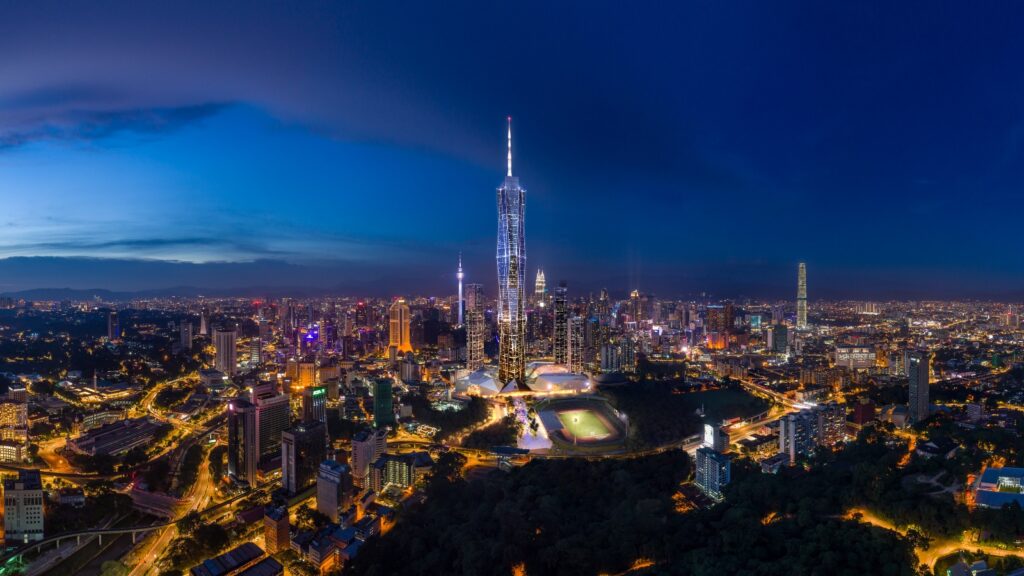
Park Hyatt KL Is Set To Open On The Highest Floors Of Merdeka 118
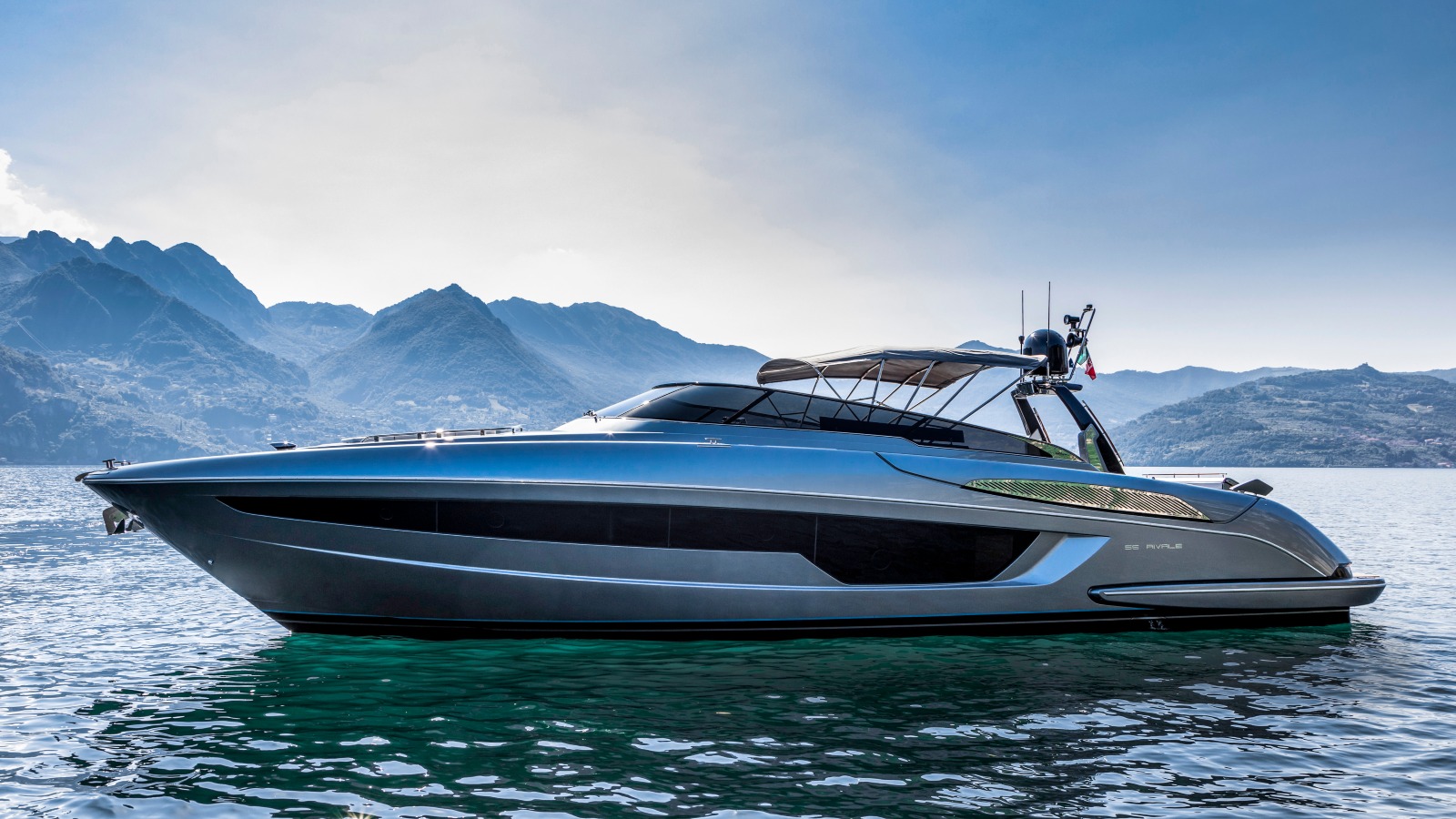
Sign up for our Newsletters
Stay up to date with our latest series

- Privacy Policy
- Terms & Conditions
- Distribution
Published by Robb Report Malaysia under license from Robb Report Media, LLC, a subsidiary of Penske Media Corporation.
- Destinations
- Home Design
- Real Estate
- Editor’s Picks

IMAGES
VIDEO
COMMENTS
This page contains notes on boat hull design goals and an accompanying page from Terho Halme has mathematical formulas used in actual catamaran hull design. It has become a popular research stop and an important reference to the catamaran design community. The content of this page was reproduced from the maestro of Catamaran designs, renown ...
T c = 0.57. Here we put B TR = 1.9 to minimize boat resistance (for her size) and get the draft calculation for a canoe body T c (Figure 1). Midship coefficient - C m. C m = A m / T c (x) B WL. We need to estimate a few coefficients of the canoe body. where A m is the maximum cross section area of the hull (Figure 3).
Have you ever wondered the processes that go into Catamaran design and building a Catamaran? Maybe. Maybe not.However for those of you who are contemplating ...
Speed and Efficiency. Power catamarans have gained popularity for offering a unique combination of speed, efficiency, and stability. Their dual-hull design allows for less water resistance, which directly translates to higher speeds and better fuel efficiency compared to traditional monohull boats.. In addition, the wide beam provided by the two hulls ensures a stable ride even at higher speeds.
Here's a short explainer on sailing catamaran hull design and the theory behind our own hulls. We have a quite distinctive and unusual design for a high perf...
Order the Latest Design Portfolio today to see over 85 multihull plans in stock.Besides illustrating my stock designs, for which I sell study plans and full construction plans, it also contains my design philosophy of multihulls; an article on the rapid Cylinder Mold(pdf) or Cylinder-molding (in html) multihull construction; examples of drawing sets; photographs; fact sheets with dimensions ...
A discussion about catamaran hull shapes and how they relate to performance and sea keeping with specific reference to the 33' catamaran Mad Max. ... The hull lines for Design 256, 8.5m Cat. It's that hump in the rocker line - right under the back of the cabin that brought up the question and is one of the key points discussed here. ...
Catamarans As one of the oldest hull shapes (imagine two logs tied together), catamarans occupy a small niche in America and larger niches in some other areas of the world. Using two hulls bridged by a deck, the catamaran design provides additional beam, increased stability and, at the same time, increased speed (the slim twin hulls have little ...
Although the catamaran hull concept is a relatively new introduction to modern boat design, the boat has been in use since the 5th century. It was used for fishing, traveling, and transporting people and supplies. Parts Of A Catamaran. Here are the basic parts of the modern sailing catamaran:
Hull design / analysis for a large catamaran using multiphase computational fluid dynamics (CFD). An interesting (and important) aspect of cat design is the wave system between the hulls (highlighted in the image below). Significant wave peaks and troughs develop through the interaction of each demihull's wake structure.
Newer Lagoon catamarans use polyester and vinylester resins, also infused with balsa cores above the waterline and solid below. Catana. With a carbon fiber inner skin, Catana also uses Twaron aramid fibers in the sandwiched hull over a foam core. Fontaine Pajot. Primary hull construction is resin-infused vinylester with a balsa cored hull and deck.
In the third part of our series, we talk again to Antoine Richer, the Naval Architect at Seawind about how bow shape, hull volume and freeboard affect the pe...
If you were to build a 40-foot (12.1-meter) catamaran, your cost of materials would range between 20-30% of the total cost. Therefore, for $300,000 total, the boat's materials would range between $60,000 and $90,000. The hull tends to range between 15-35% of the total build.
The way these vessels excel is through their distinctive catamaran hull design which benefits from Incat Crowther's authority on catamaran design and technology. The two large connecting hulls of the ShadowCat offer significantly more stability over a monohull vessel - so much so that the catamaran is one of the most stable hull types in ...
Contact us to find the right professionals and resources for your project, or to create a custom design to empower your vision for time on the water. Sailing Catamarans, Trimarans and Power Cats. Plans for Kit Construction - Catamarans and Trimaran Designs by Grainger Designs
Get the Best Catamaran Hull Design. A cruising catamaran's performance depends on three main aspects; its length, the sail area, and the boat's weight. Long boats are generally fast. A light boat with more sail area is also faster than a heavier boat with less sail area. In other words, you can make a multihull faster by making it longer ...
However, the power catamaran is a relatively modern innovation that marries the traditional twin-hull design with powerful engines, offering a unique blend of speed, stability, and space. Distinguishing Design: Power Catamarans are characterized by their twin hulls, which significantly reduce the drag, thus enhancing speed and fuel efficiency.
Catamarans offer a stable ride with predictable hull movement. The seakeeping is excellent, even in rough conditions. Another advantage the design provides: incredible onboard space. The space of a catamaran is often comparable to that of a monohull that is 25 percent longer. Catamarans also have been proven to provide efficient operation.
This usually means anyone at the front or sides of the boat takes most of the jostling,"Myers says. "The catamaran-style hull delivers ride comfort, smoothness, load distribution, and stability."That stability draws anglers to powercats of typically 20 to 40 feet; and cruisers to sailing cats 40 to 60 feet and beyond. — Rich Armstrong.
Non-Boat Designs; Alternative Construction; All plans come with a 30-Day money back guarantee. Providing boat Plans & memories Since 1953. For more than 60 years Glen-L has been the world's premier supplier of boat plans and patterns designed for the amatuer builder. We make it even simpler by offering associated supplies and hardware kits ...
Malcolm Tennant designed the hull and rudders. "The rest was done in-house," Bill says. ... Click on Comments below to share your thoughts on the interior design or start a discussion about Maine Cat P-47. Posted at 12:11 PM in Custom ... a 65.5-foot/20-meter custom power catamaran that Jean-Pierre and Marie DuFour have been building for the ...
A set of asymmetrical catamaran hull forms with waterline length of 1.6 m with a separation ratio (s/L) of 0.4 were generated by using standard modelling software.
Evolved from Safehaven's 75-foot XVS20 monohull launched in 2018, Kowalski used his expertise in building commercial, work-boat power catamarans to design the twin-hulled T-2000 Voyager to offer ...
As the Cannes Yachting Festival 2024 rapidly approaches, Wider Yachts has announced the display of its 28.4-metre WiderCat 92.With five units already sold and the second hull recently completed and commissioned, the event offers buyers the opportunity to experience the hybrid propulsion technology of the catamaran firsthand.
News & Events; Handcrafted. Custom. Catamarans. Island Hopper. NEW MODEL - The perfect family boat is here. Doesn't matter if you like pulling up to sandbar parties, cruising ar
Evolved from Safehaven's 75-foot XVS20 monohull launched in 2018, Kowalski used his expertise in building commercial, work-boat power catamarans to design the twin-hulled T-2000 Voyager to offer speed with stability. "The stability in beam seas is what's key here," he says.